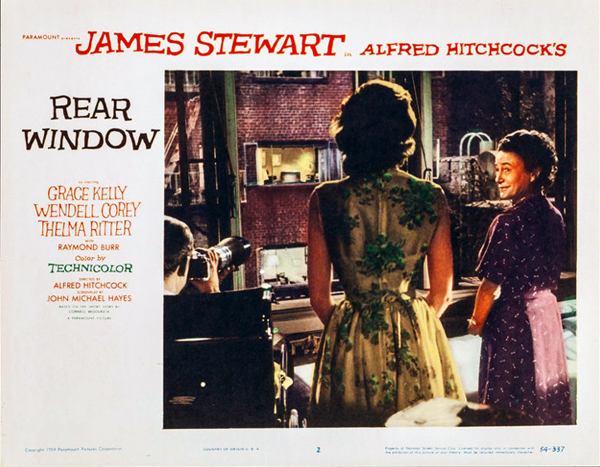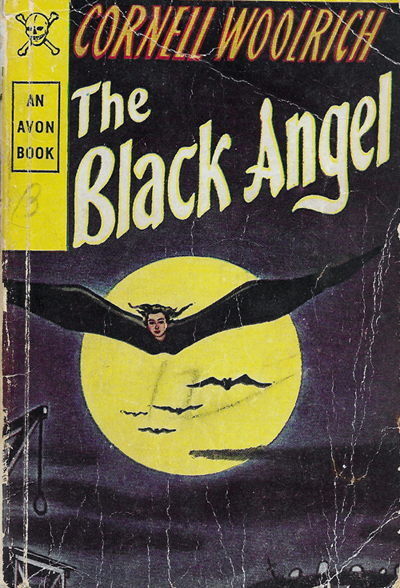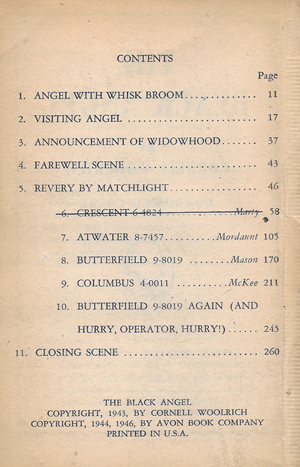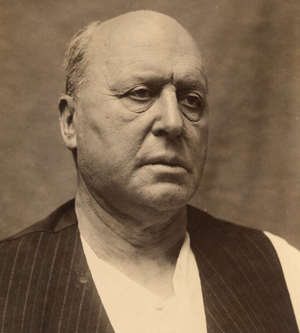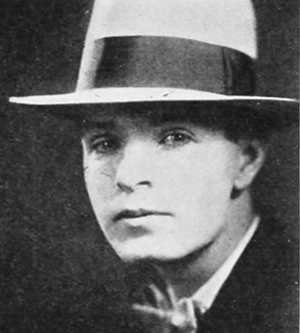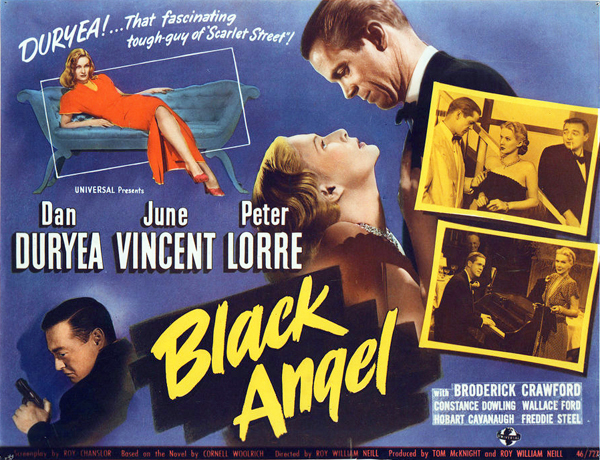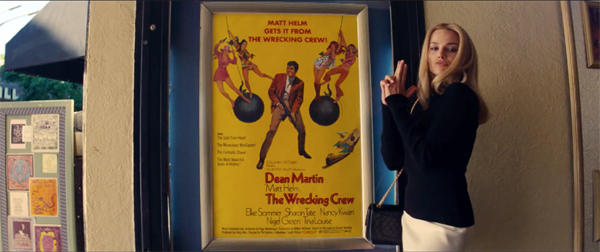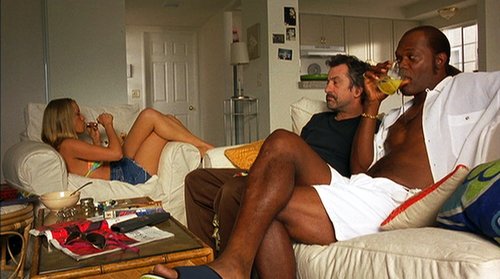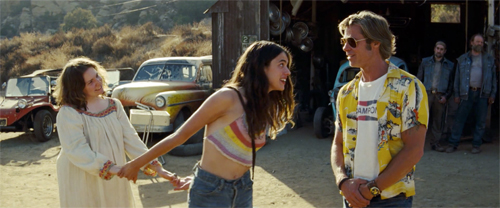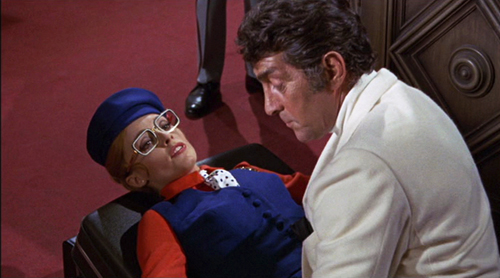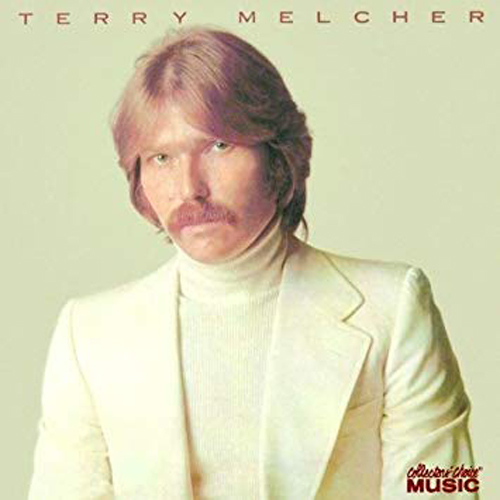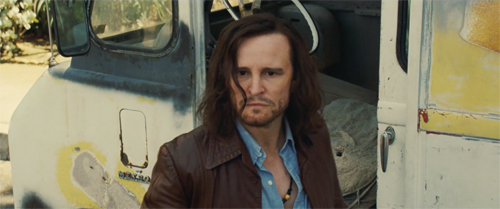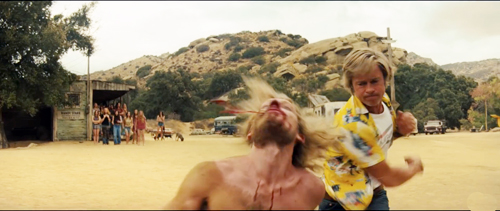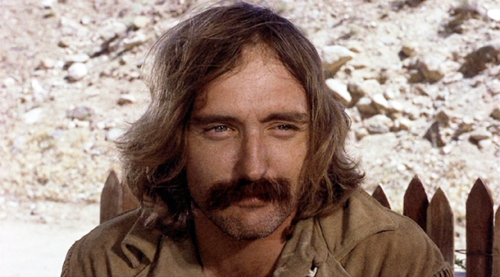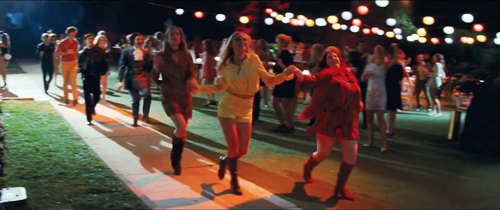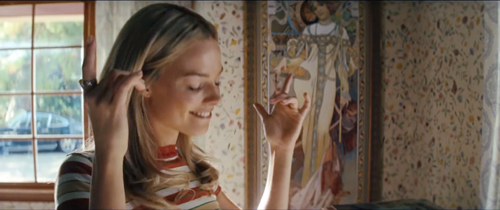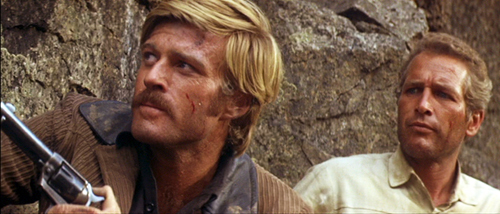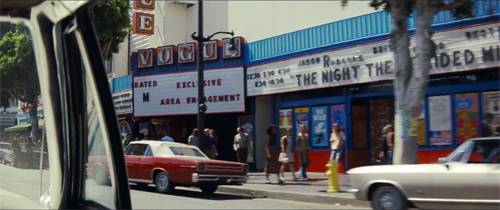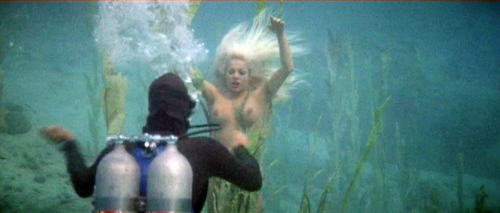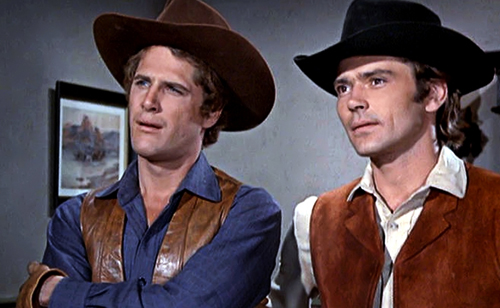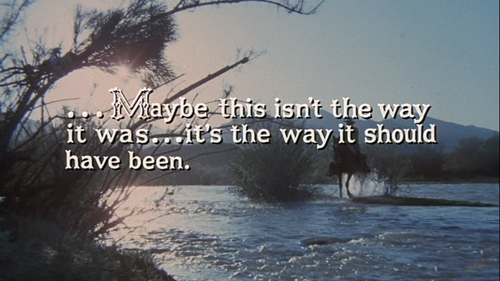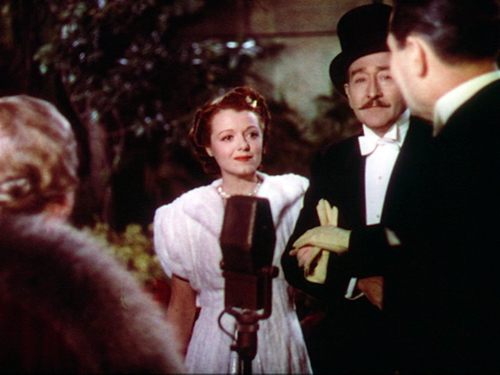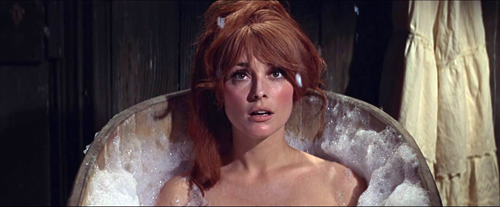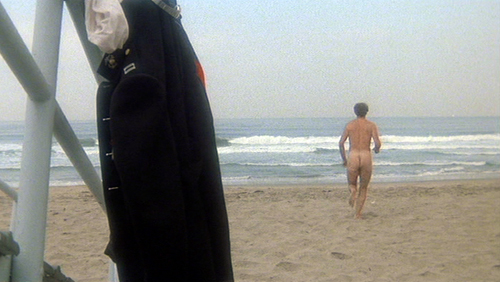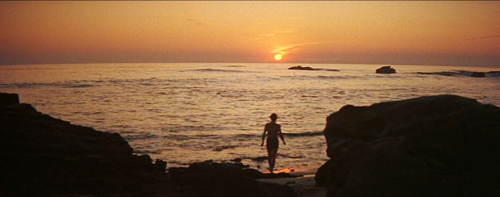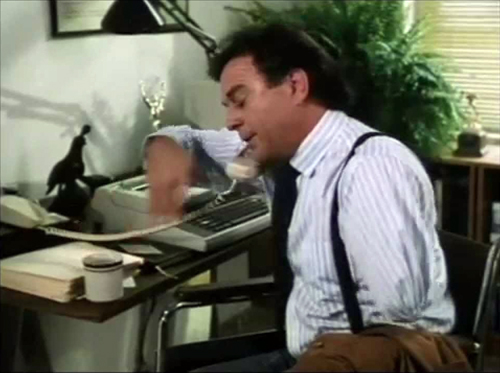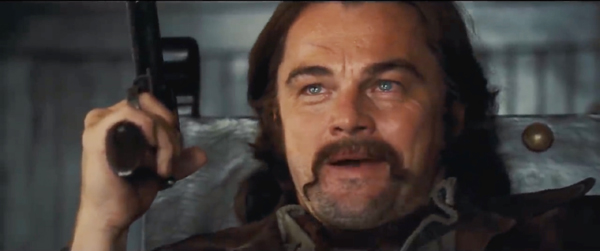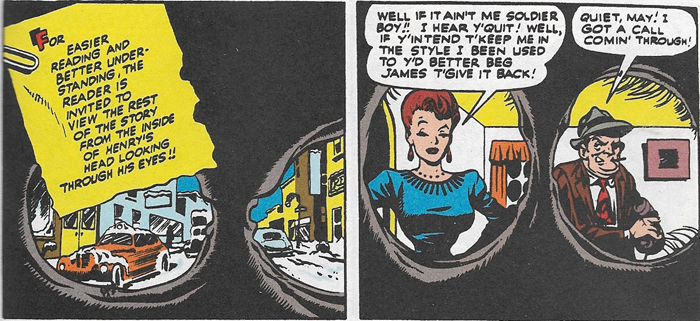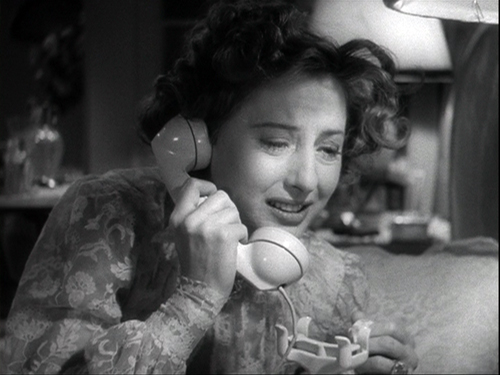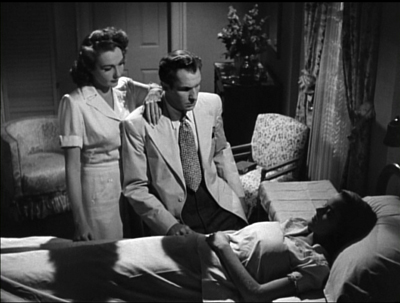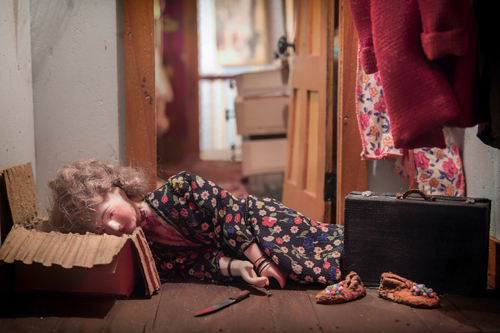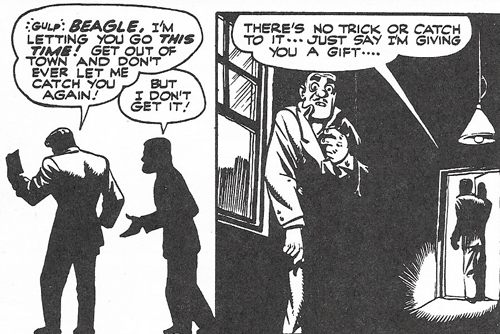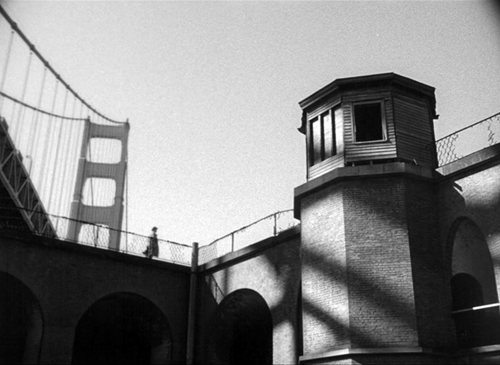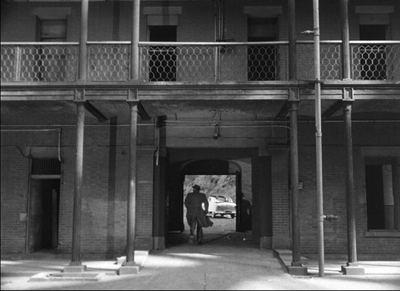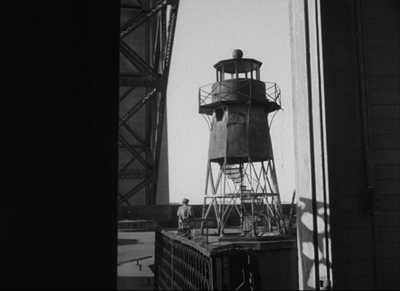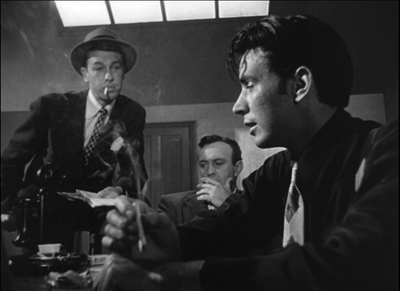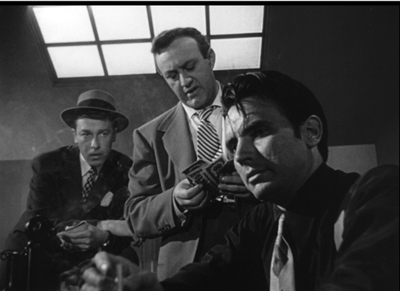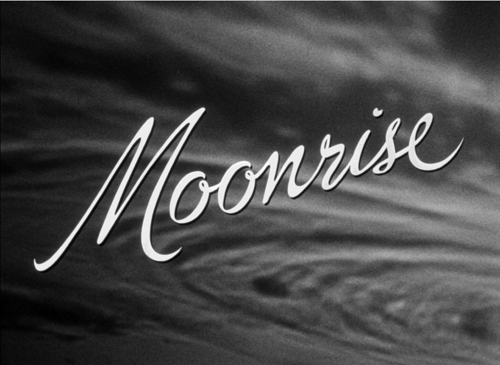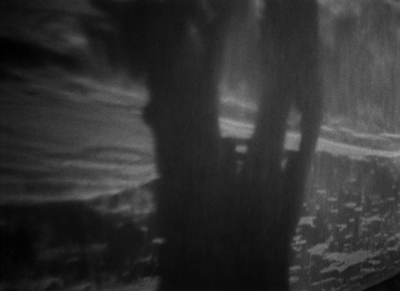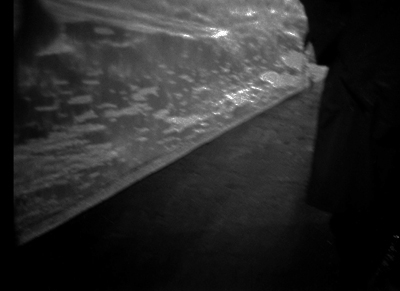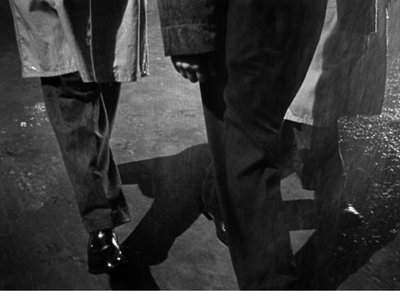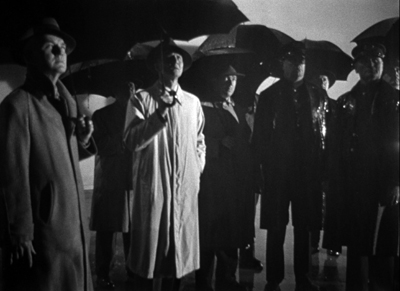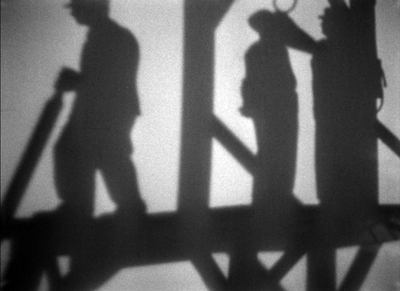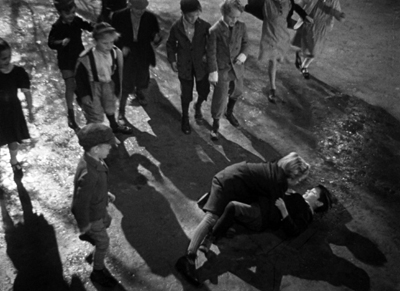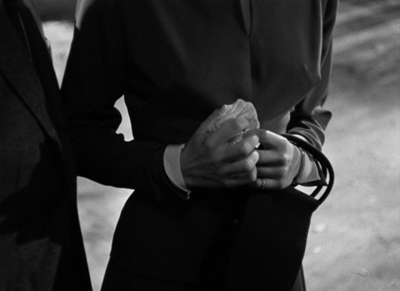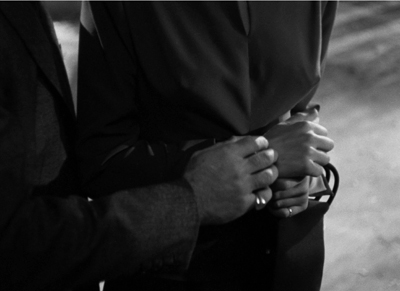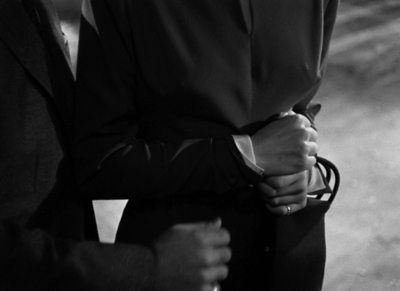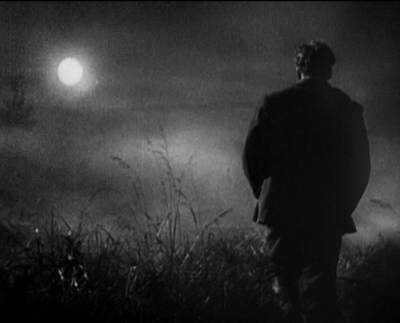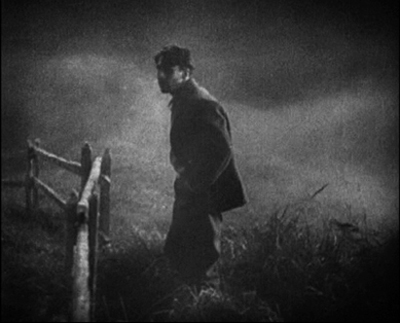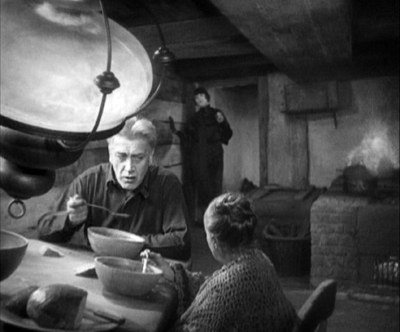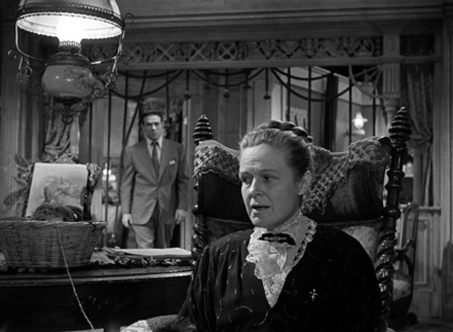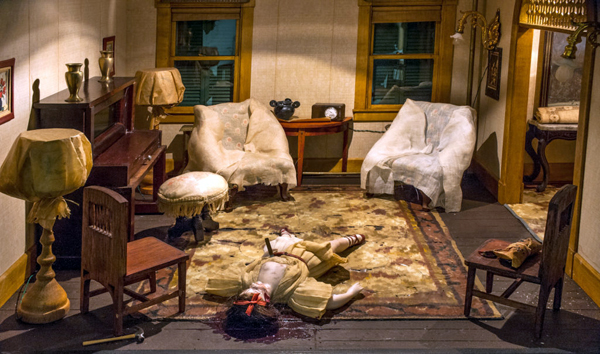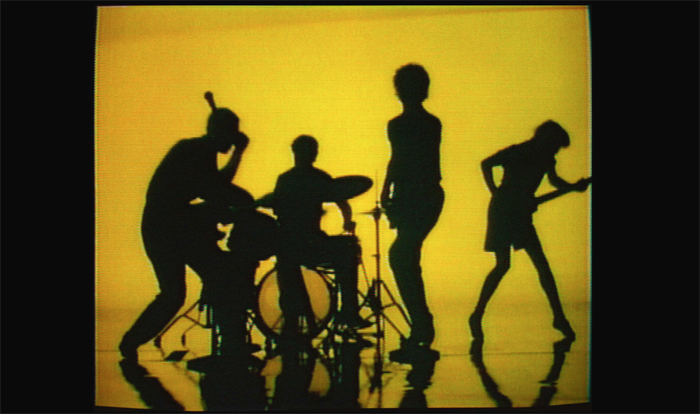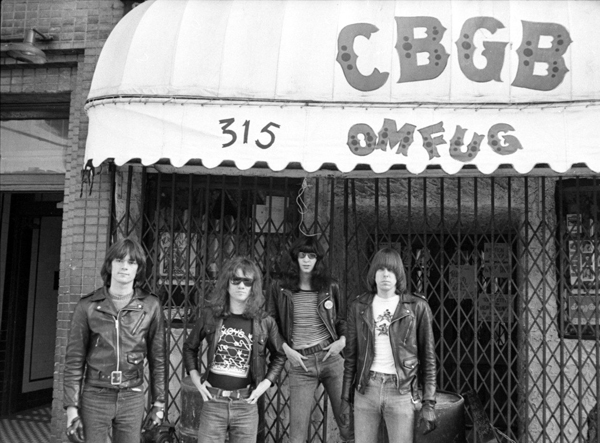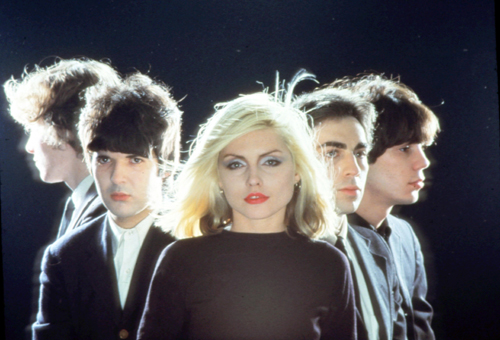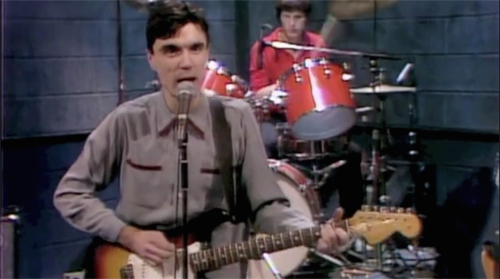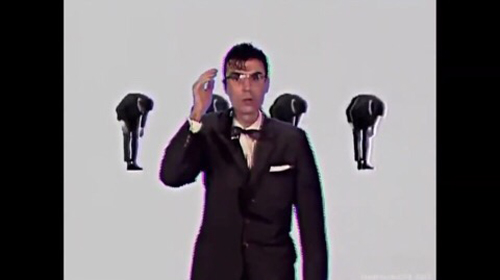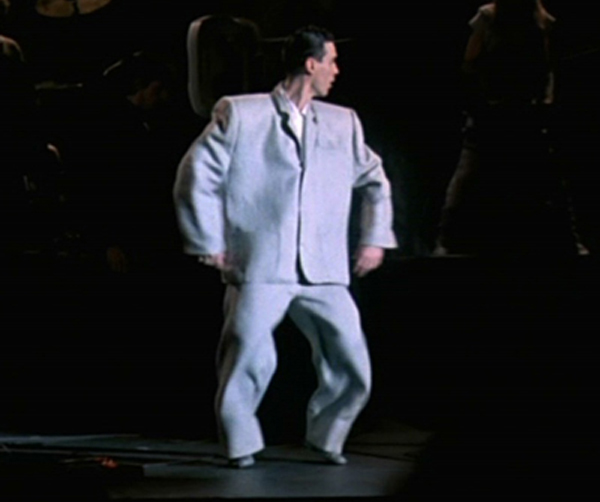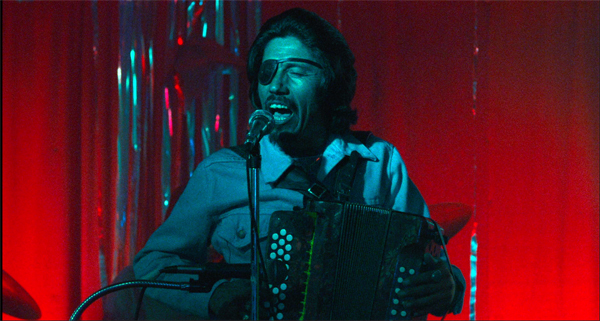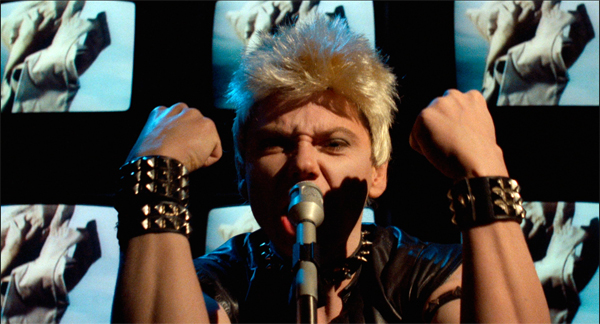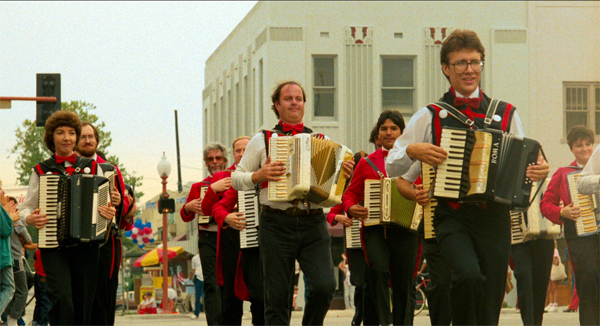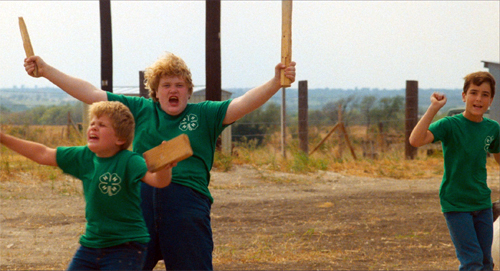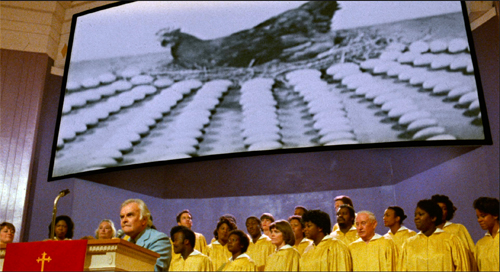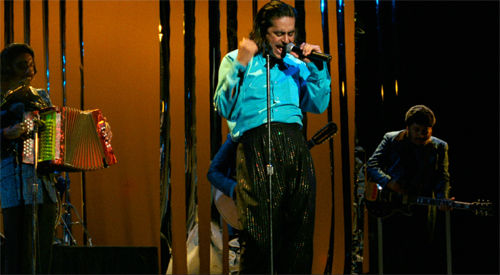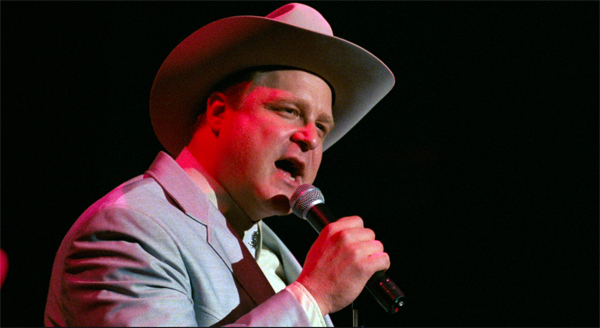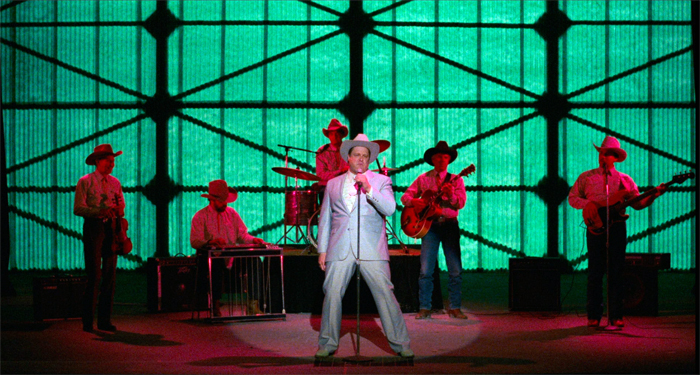Archive for the 'Film and other media' Category
Cornell Woolrich: The overstrained imagination goes to the movies
DB here:
Can a storyteller be maladroit in using his or her medium and still be worth reading? Can a novelist with a clumsy style be a “good writer”? I’ve posed this question before on this site, and developed an argument about it at length in our book on Christopher Nolan.
Here’s a test case. These are real sentences from books by a novelist many consider one of the great crime/mystery writers of all time.
The knob felt cold and glibly elusive under his touch.
His face was an unbaked cruller of rage.
La Bruja lidded her eyes acquiescently.
I began treacherously touching up my hair via the mirror.
I crawled up onto the seat by means of my hands.
She could feel her chest beginning to constrict with infuriation.
This time the man got up off the bench, taking Quinn’s hand on his shoulder along with him.
Smoke suddenly speared from her nostrils in two malevolent columns. She looked like Satan. She looked like someone it was good to stay away from.
I was probably just a blurred bottle-green offside to her retinas.
“Made it,” Joan Bristol exhaled relievedly.
Seconds went by in packages of sixty.
The foaming laces that cascaded down her were transparent as haze against the light bearing directly on her from the room at her back. Her silhouette was that of a biped.
These passages, and many more like them, were published in books issued by major houses and still in print today. Can anything redeem them?
I’m currently trying to write a book on principles of popular narrative, with a focus on genres of crime and mystery. The project stems from arguments in Reinventing Hollywood and The Way Hollywood Tells It, but I wanted to broaden my inquiry to include theatre and literature as well. One section is about crime writers of the 1940s and 1950s. So naturally I had to include the widely renowned Cornell Woolrich.
Despite his struggles with syntax and word choice, Woolrich has been a perennial source of popular storytelling. Nearly all the novels were brought to the screen soon after publication, and radio versions of the books and short stories were plentiful. By the 2010s his work had inspired over a hundred movies and television shows (directed by, among others, Hitchcock, Truffaut, Fassbinder, and Jacques Tourneur).
That research has led me two further questions. Are there aspects of his work that counterbalance howlers like those above? And what might have led to those stylistic problems? Readers looking for more direct and detailed studies of film versions of his work can go to Francis M. Nevins’ exhaustive biography and Thomas C. Renzi’s careful consideration of adaptations. (And my studies of The Chase, if you want.) Meanwhile, tackling the questions that interest me, I’ll touch on aspects of cinema a little bit. File this blog under Questions of Narrative Across Media.
Breathless reading
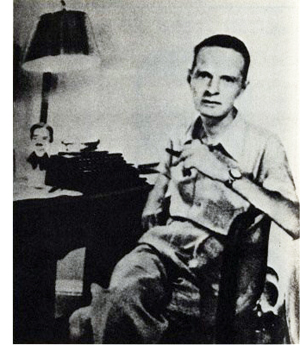 Cornell Woolrich is usually treated as an author with a uniquely haunting voice. Alcoholic and homosexual, he lived for decades in a hotel with his mother. After she died, he lost a leg to untreated gangrene. He dedicated one book to the typewriter on which he pounded out pulp stories and thriller novels, the most famous of them published in the years 1940-1948. His tales of suspense cultivated a hothouse morbidity. At his limit, Woolrich projects a paranoid vision of life without hope and death without dignity.
Cornell Woolrich is usually treated as an author with a uniquely haunting voice. Alcoholic and homosexual, he lived for decades in a hotel with his mother. After she died, he lost a leg to untreated gangrene. He dedicated one book to the typewriter on which he pounded out pulp stories and thriller novels, the most famous of them published in the years 1940-1948. His tales of suspense cultivated a hothouse morbidity. At his limit, Woolrich projects a paranoid vision of life without hope and death without dignity.
Despite his distinctive sensibility, Woolrich epitomizes some broader narrative strategies of his time. Like all popular writers, he inherited situations, techniques, and themes. To present a bleak, aching world of precarious love and doomed lives, he twisted those conventions into eccentric shapes that added to the Variorum of 1940s mystery storytelling.
For him, one bout of amnesia isn’t enough, so The Black Curtain (1941) doubles it: the hero, already having forgotten his previous identity, is clobbered by some falling bricks and now can’t remember who he just was. The prototypical serial killer of the 1940s is a man, but The Bride Wore Black (1940) lets a woman stalk her victims. Most thriller novelists are content to put one woman in jeopardy per book, but Black Alibi (1942) lines up six. Alternatively, when a woman tries to save her husband from the chair by investigating four suspects, she’s plunged into danger every time she meets one (The Black Angel, 1943).
Woolrich’s plots flout police procedure (his cops are exceptionally willing to help suspects), and the authorities often flounder. Suspense thrillers usually invoke the supernatural only to dispel it, but in Night Has a Thousand Eyes (1945) the authorities fail to save a life because one old man really can predict the future. Not that amateur sleuths fare much better. The unheroic hero of The Black Path of Fear (1945) could hardly be more ineffective; he has to be rescued by the Havana police.
Sometimes the straining for originality snaps. Critics have long pointed out improbabilities and contradictions in the plots. Woolrich’s most devoted chronicler, Francis M. Nevins, warns of “chaotic ambiguities.” The chronology of Rendezvous in Black (1948) is impossible, while the climactic revelation of I Married a Dead Man (1948) is arguably incoherent. Convenient coincidences abound. Add to this a hypertrophied style that in every book slips into unabashed weirdness. (See above.)
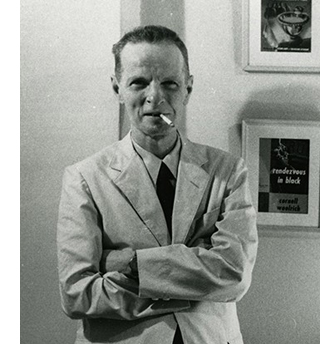 Both the plot problems and the vagaries of language can partly be attributed to the rush of Woolrich’s production, his transport while hammering at his Remington Portable. Pulp author Steve Fisher recalled: “Sitting in that hotel room he wrote at night—continuing through until morning, or whenever the story was finally completed. He did not revise, polish, and I suspect did not even read the story over once it was committed to paper.” Although Woolrich was grateful to editors who corrected his hundreds of errors in spelling and punctuation, he apparently resisted efforts to touch up his prose. When an editor suggested a change to a single paragraph, he replied, “I knew you wouldn’t like it,” and left the publisher forever.
Both the plot problems and the vagaries of language can partly be attributed to the rush of Woolrich’s production, his transport while hammering at his Remington Portable. Pulp author Steve Fisher recalled: “Sitting in that hotel room he wrote at night—continuing through until morning, or whenever the story was finally completed. He did not revise, polish, and I suspect did not even read the story over once it was committed to paper.” Although Woolrich was grateful to editors who corrected his hundreds of errors in spelling and punctuation, he apparently resisted efforts to touch up his prose. When an editor suggested a change to a single paragraph, he replied, “I knew you wouldn’t like it,” and left the publisher forever.
Admiring readers excuse the faults by testifying that Woolrich’s evocation of tension keeps the pages turning. “Headlong suspense created by total, unrelieved anxiety,” noted Jacques Barzun. “Breathless reading is the sole pleasure.” Raymond Chandler called him the “best idea man” among his peers, but admitted, “You have to read him fast and not analyze too much; he’s too feverish.”
What keeps us reading? For one thing, the outré story situations. A couple hurrying to leave New York must clear the man of murder before the bus leaves (Deadline at Dawn, 1945). A killer stalks a city, but it’s not a human: it’s (apparently) a black jaguar escaped from a sideshow (Black Alibi). A mail-order bride seems unacquainted with things she wrote in her letters (Waltz into Darkness, 1947). Most famously, a man laid up in his apartment thinks he sees traces of a killing through a window across the courtyard (“Rear Window,” 1942).
Outrages to plausibility carry their own allure. What, we ask, might come of these wild mishaps? A train crash kills a husband and his pregnant wife. In the melée an abandoned woman, also pregnant, is mistaken for her and welcomed by the husband’s family. Conveniently, the in-laws have never seen the wife (I Married a Dead Man, 1948) A man accused of murder has an alibi, to be provided by a woman he met in a bar and took to a show. Trouble is, she’s vanished. All the witnesses deny she existed (Phantom Lady, 1942).
The development of the action also presents intriguing reversals. The man gulled by the fake mail-order bride falls in love with her. People who claim not to have seen the phantom lady wind up dead. The woman trying to exonerate her husband falls in love with the real killer and dreams about him even after he has killed himself.
The game is afoot
Woolrich’s novels tend to rely on two basic plot patterns, both based on the hunt. In one, amateurs try to solve a crime and move from suspect to suspect. Our viewpoint is mostly tied to the investigators. In the other pattern, a serial killer stalks a string of victims, and here Woolrich is more innovative. Normally, the serial-killer plot either concentrates on the killer’s viewpoint, as in the novels Hangover Square (1941) and In a Lonely Place (1947), or concentrates on the investigators, as in Ellery Queen’s Cat of Many Tails (1949). A few constantly bounce the spotlight among all the parties—killer, victims, and investigators—as in Fritz Lang’s film M (1931) and Philip MacDonald’s novel X v. Rex (1933).
Woolrich by contrast emphasizes the victims’ viewpoints. The killer might appear only at the beginning and end (Rendezvous in Black) or get introduced at intervals in brief, objective scenes (The Bride Wore Black). Less space is devoted to the investigators, although they gain prominence as the crimes pile up. Woolrich puts his energies into building waves of suspense as one target after the other confronts death.
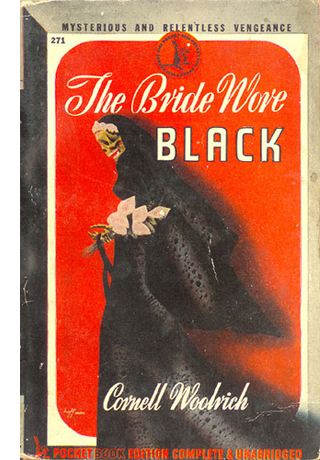 The shooting-gallery structure enables Woolrich to fulfill Mitchell Wilson’s demand that the thriller devotes its energies to showing what fear feels like. The 1940s interest in intense subjectivity of narration helps out here, and Woolrich sustains it in detailed description of victims’ reactions. In Black Alibi, Teresa is being stalked by an unseen figure.
The shooting-gallery structure enables Woolrich to fulfill Mitchell Wilson’s demand that the thriller devotes its energies to showing what fear feels like. The 1940s interest in intense subjectivity of narration helps out here, and Woolrich sustains it in detailed description of victims’ reactions. In Black Alibi, Teresa is being stalked by an unseen figure.
Something else now assailed her, again from without herself, but of a different sensory plane than hearing this time. A prickly sensation of being watched steadily from behind, of something coming stealthily but continuously after her, spread slowly like a contraction of the pores, first over the back of her neck, then up and down the entire length of her spine. She couldn’t shake it off, quell it. She knew eyes were upon her, something was treading with measured intent in her wake.
This passage is part of a ten-page account of the woman’s wary progress through a night street, rendered wholly from her viewpoint.
Woolrich’s other basic plot pattern, the investigation of a murder, plays up the role of fear as well. His amateur detectives, lacking official firepower, are constantly facing danger from the suspects they track.
Fright was like an icy gush of water flooding over them, as from burst pipe or water-main; like a numbing tide rapidly welling up over them from below. [Deadline at Dawn]
In both of his favored plot schemes, the plunges into characters’ minds and bodies help fill out a full-length novel. If you play down other lines of action (professional police investigation, killer’s mental life), you need to dwell on the reactions of the victims or amateur detectives.
Yet this very emphasis is one source of the stylistic howlers. In expanding his suspense scenes, Woolrich’s prose sometimes fails him. Needing to spin out lots of words evoking an ominous atmosphere, he’s tempted to pileups like this:
And the path that had led me to it through the night had been so black and so full of fear, and downgrade all the way, lower and lower, until at last it had arrived at this bottomless abyss, than which there was nothing lower. [The Black Path of Fear]
Such rodomontade carries the 1940s emphasis on subjectivity to paroxysmic limits.
He recruits other techniques of popular storytelling. They keep his action moving forward through time and plunging inward into the unfolding scenes. And some can help mask story problems.
By hinging his story around a search for a killer or a victim, Woolrich’s plots tend create a string of one-on-one encounters. Rather than disguising the episodic quality of these, he sharpens them by breaking the action into distinct blocks. Those blocks are presented as a checklist agenda, Woolrich’s equivalent to the closed circle of suspects we find in the classic weekend-house-party detective story.
The Black Angel is a simple instance.
After an initial cluster of five chapters presenting Kirk Murray sentenced to death, we follow Kirk’s wife Alberta as she seeks the true killer. Her efforts are given in five parallel chapters, each indented and tagged with a telephone number. One that Alberta finds scratched out in an address book is presented just that way in the chapter title: “Crescent 6-4824.” Because at the climax she returns to one of the four suspects, another title gets recycled: “Butterfield 9-8019 Again (And Hurry, Operator, Hurry!).”
A more complicated example of modularity is The Bride Wore Black. It’s broken into five parts, each titled with the name of a victim. Each part contains three sections.
“The Woman” shows the vengeful bride launching a new false identity. The part’s second section, titled with the victim’s name, shows how the murder is accomplished. A third section offering “Post-Mortem” on the victim consists of documents and conversations among the police. Viewpoints are rigidly channeled as well. Each “Woman” section is handled in objective description, while each victim section presents the targeted man as the center of consciousness. The book could be mapped out on a spreadsheet.
The modular layout and rigorous moving-spotlight narration risk choppiness, yielding something like a set of short stories. But the tidy exoskeleton can make the plot seem rigorously organized, even while it masks problems of time and causality. And the very arbitrariness of the pattern creates a sort of meta-curiosity. Like the teasing tables of contents in 1920s and 1930s detective fiction, a Wooolrich checklist of suspects or victims makes us aware of a larger rhythm. How will this pattern be filled out?
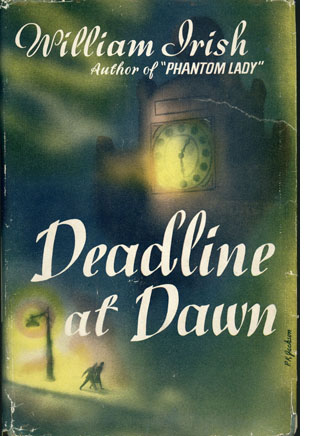 An overarching unity is provided as well by the demands of a deadline (another Hollywood-friendly feature). Thanks to this classic device, Woolrich can use time tags to trigger anticipation and yield a sense of shape. Long before the husband in Phantom Lady gets accused of the crime, the first chapter bears the title, “The Hundred and Fiftieth Day before the Execution,” effectively dooming him from the start. Deadline at Dawn replaces chapter titles with illustrated clock faces to impose a strict structure.
An overarching unity is provided as well by the demands of a deadline (another Hollywood-friendly feature). Thanks to this classic device, Woolrich can use time tags to trigger anticipation and yield a sense of shape. Long before the husband in Phantom Lady gets accused of the crime, the first chapter bears the title, “The Hundred and Fiftieth Day before the Execution,” effectively dooming him from the start. Deadline at Dawn replaces chapter titles with illustrated clock faces to impose a strict structure.
Facing a ticking clock wedded to a clear-cut pattern, we become sensitive to variations among the modules. The victim-centered chapters of The Bride contrast the personalities and private lives of the male victims, along with Julie’s resourceful methods of murder, and the last chapter breaks the three-part format by inserting a flashback dramatizing the fatal wedding. Rendezvous in Black revives the shooting-gallery structure of Black Angel and The Bride, adding a schedule that sets each murder on May 31st of different years. Within this regularity (“The First Rendezvous,” etc.), viewpoints multiply gradually so that the interplay of characters’ range of knowledge becomes richer.
The modular structure shows up in milder ways. Black Alibi tags its chapters with victims’ names and concentrates on one woman’s terror at a time, with each chapter concluding with an exchange among investigators. Deadline at Dawn and Phantom Lady alternate scenes between two characters embarked on parallel investigations. Night Has a Thousand Eyes, in some ways the most ambitious of the books, embeds the checklist within the police investigation. As teams of cops trace parallel leads, their efforts are crosscut with the target under threat, waiting with his daughter and a cop.
A simpler, more poignant, rhyme-and-variations effect is supplied by a prologue and epilogue in I Married a Dead Man. The prologue’s first-person narration, set off from the central chapters’ third-person narration, finishes: “We’ve lost. That’s all I know. We’ve lost, we’ve lost.” An epilogue rewrites the prologue and yields closure: “We’ve lost. That’s all I know. And now the game is through.” In such ways, Woolrich brings the overt compositional symmetry of both “serious literature” and the puzzle-driven detective story into the thriller.
Sweating the small stuff
Henry James, 1913; Cornell Woolrich, ca. 1927.
By the 1920s, ambitious Anglo-American writers in both popular genres and “advanced” literature had fallen under the sway of a new model of the novel. Henry James had argued that if the novel was to be a true art form, it needed more compositional rigor, a patterned architectural solidity. He also advocated for a self-conscious control of viewpoint and a greater commitment to concrete presentation of action. (“Dramatize, dramatize!”) A little later, Joseph Conrad’s books had demonstrated the power of shifting viewpoints and multiple narrators, as well as an emphasis on the power of sight.
Popular writers of the nineteenth century, notably Dickens and Wilkie Collins, had already made use of some of these techniques, as did more highbrow efforts, like Robert Browning’s verse novel The Ring and the Book (1868-1869). But in the wake of James and Conrad, tastemakers erected these principles into strict norms for well-made novels. These precepts were set out explicitly in Percy Lubbock’s The Craft of Fiction (1922), and they were picked up in popular writing manuals as well.
Many mainstream fiction writers (and dramatists) took up the techniques promoted by the James-Conrad-Lubbock tradition. Middlebrow novels employed block construction, played with multiple viewpoints, and included an explicit “exoskeleton” of labeled parts pointing up a self-conscious architecture. Joseph Hergesheimer’s Java Head (1919) spreads nine characters’ viewpoints across ten parallel chapters. Detective fiction wasn’t immune to the new methods. Conrad’s exploration of optical viewpoint has a contemporary counterpart in the Chestertonian grandeur of the mystery story “The Hammer of God” (1910). Father Brown is standing at the top of a church.
Immediately beneath and about them the lines of the Gothic building lunged outwards into the void with a sickening swiftness akin to suicide. . . . When they saw [the church] from below, it sprang like a fountain at the stars; and when they saw it, as now, from above, it poured like a cataract into a voiceless pit.
The writers of High Modernism revised the James-Conrad-Lubbock norms, pushing toward more difficult manipulations of time, viewpoint, and subjective states. Faulkner’s The Sound and the Fury assigns different narrational voices to its four-block layout, but these make the story world and the time scheme opaque. (Even if you master the stream-of-consciousness technique, you still have to figure out that one character is called by two names and two characters have the same name.)
Like many other writers, Woolrich pulls several post-James techniques into genre literature. His block construction, marked by strict times and viewpoints, along with his labeling of plot phases, owes something to this tradition, as well as to the clever construction of detective stories of the 1920s and 1930s (Ellery Queen, Anthony Berkeley, et al.). He borrows another narrative strategy as well: granular scene description keyed to a character’s sensations and feelings. We get a kind of hypertrophy of Lubbock’s “Show, don’t tell.” In reply to James, Woolrich in effect declares, “Overdramatize, overdramatize!”
In his uncompleted autobiography, Woolrich reflected on his early efforts to compose scenes. A man takes a hotel elevator, and instead of writing, “He got in, the car started; the car stopped at the third and he got out again,” the young Woolrich would pad the trip out to a page or more. This was amateurish, he thought at the end of his life. Yet this sort of expansion of action moment by moment is a hallmark of his 1940s novels. Perhaps it’s what Chandler had in mind when referred to Woolrich “getting deep into every scene.”
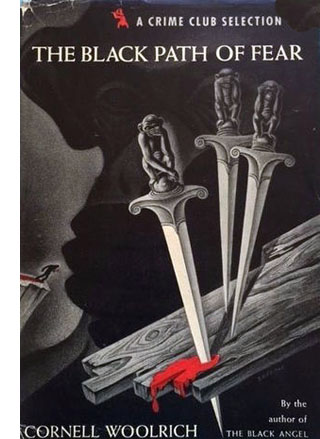 As we’ve seen, moments of terror and suspense are rendered in detail. So are the necessary touches of atmosphere. In The Black Path of Fear, the man on the run has told his story to Midnight.
As we’ve seen, moments of terror and suspense are rendered in detail. So are the necessary touches of atmosphere. In The Black Path of Fear, the man on the run has told his story to Midnight.
When I’d finished telling it to her the candle flame had wormed its way down inside the neck of the beer bottle, was feeding cannibalistically on its own drippings that had clogged the bottle neck. The bottle glass, rimming it now, gave a funny blue-green light, made the whole room seem like an undersea grotto.
We’d hardly changed position. I was still on the edge of her dead love’s cot, inertly clasped hands down low between my legs. She was sitting on the edge of the wooden chest now, legs dangling free. . . .
The behavior of light, the insistence on color, the description of the characters’ postures and gestures—these are typical of Woolrich’s scenes.
Even the simplest action employs Lubbock’s “scenic method” to a disconcerting degree. To quote adequately would take pages, but some samples can suggest just how distended and detailed even minimally functional scenes are.
I reached out for a little lamp he had there close beside the bed and clicked it on. Twin halos of light sprang out, one at each end of the shade, and showed up our faces and a little of the margin around them. The shade itself was opaque, to rest the eyes.
Then I just sat back and waited for the shine to percolate through to him, sitting on the bias to him. It took some time. He was sleeping like a log. [The Black Path of Fear]
Any other writer would have retained just the first sentence and the last (but maybe not with the clichéd phrasing). Who cares about the design of a light fixture, or whether the shade rests the eyes? Yet Woolrich feels the need to show and tell as much as he has room for.
A woman comes to a Bowery bar looking for a murder suspect. After a page and a half of banter with the bartender, she finds her quarry hunched over a tabletop. Another page is devoted to rousing him.
He moved slightly, and I saw him looking downward at the floor around his feet. Looking around for something on that filthy place where people stepped and spat all day long. In a moment more I had guessed what he was looking for and I opened my handbag and took out the cigarettes I had provided myself with and held the package ready, with one protruding, as my first silent overture.
His eyes stopped roaming suddenly, and they had found the small arched shape of my shoe, planted there unexpectedly on that floor beside him, and the tan silk ankle rising from it. [The Black Angel]
It takes another page for the drunk to accept the cigarette, and three more for the woman to question him. But he’s too incoherent, so she parks him in a hotel and resumes questioning him the next day—a process that takes fifteen pages and includes detailed descriptions of the hotel room, the light filtering in, and the two characters’ shifting positions in space.
This writer has Roderick Usher’s “morbid acuteness of the senses.” Scenes are thick with smells and sounds. One virtuoso section of Rendezvous in Black is all noises and speech because our center of consciousness is a blind woman. Above all, Woolrich’s scenes revel in optical point of view.
Movies on the page
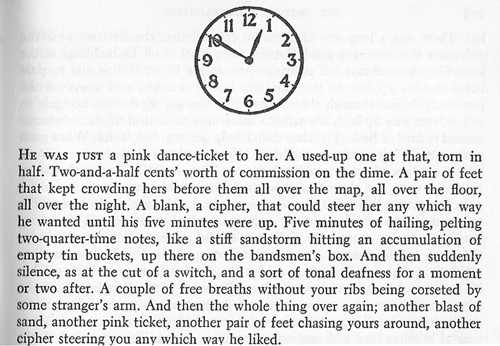
Sometimes the observer is imaginary, looking at things alongside the character. Detective Wanger enters a murder scene.
They seemed to be playing craps there in the room, the way they were all down on their haunches hovering over something in the middle of the floor. You couldn’t see what it was, their broad backs blotted it out completely. It was awfully small, whatever it was. Occasionally one of their hands went up and scratched the back of its owner’s rubber-tired neck in perplexity. The illusion was perfect. All that was missing was the click of bone, the lingo of the dicegame. [The Bride Wore Black]
Actually, the policemen are interrogating a boy whose father has been murdered. Presumably Wanger doesn’t take the huddle for a craps game. We’re given the mistaken impression of a novice observer who’s watching from a particular angle.
More often, it’s the character who occupies a definite station point, determined by foreshortening and perspectival distortion. The supreme example is of course the short story “Rear Window” (1942) whose original title was “Murder from a Fixed Viewpoint.” One of his clumsy passages in another story tries for the same kind of positioning: “He turned and looked up, startled, ready to jump until he’d located the segment of her face far up the canal of opening between them.”
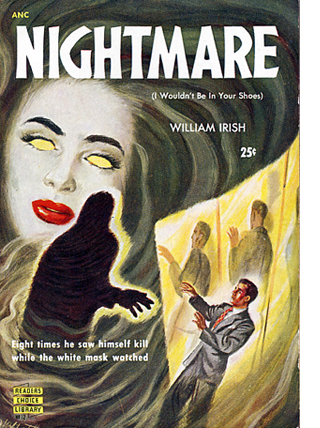 Woolrich’s interest in the geometry of looking, what can and can’t be seen, finds a natural home in eyewitness plots, of which there were several in 1940s film and fiction (and even radio). In “Rear Window,” the protagonist Jeff tracks his neighbor’s progress from window to window as if studying an Advent calendar. Woolrich strives to capture the exact geometry of Jeff’s field of view.
Woolrich’s interest in the geometry of looking, what can and can’t be seen, finds a natural home in eyewitness plots, of which there were several in 1940s film and fiction (and even radio). In “Rear Window,” the protagonist Jeff tracks his neighbor’s progress from window to window as if studying an Advent calendar. Woolrich strives to capture the exact geometry of Jeff’s field of view.
There was some sort of a widespread black V railing him off from the window. Whatever it was, there was just a sliver of it showing above the upward inclination to which the window sill deflected my line of vision. All it did was strike off the bottom of his undershirt, to the extent of a sixteenth of an inch maybe. But I hadn’t seen it there at other times, and I couldn’t tell what it was.
Jeff’s tightly focused attention contrasts with his neighbor Thorwald’s casual sweeping looks toward the courtyard. The climax will come when Thorwald realizes he’s been Jeff’s target, and Jeff sees in the murderer’s look “a bright spark of fixity” that “hit dead-center at my bay window.”
A similar effect occurs at the climax of “The Boy Cried Murder” (aka “Fire Escape”) of 1947, the source of the film The Window (1949). Buddy has been sleeping on a fire escape and is awakened by a murder he watches through a slit in the window shade. The woman comes toward him.
She started to come over to where Buddy’s eyes were staring in, and she got bigger and bigger every minute, the closer she got. Her head went way up high out of sight, and her waist blotted out the whole room. He couldn’t move, he was like paralyzed. The little gap under the shade must have been awfully skinny for her not to see it, but he knew in another minute she was going to look right out on top of him, from higher up.
Again, there’s a stylistic slip (of course she’ll be higher up if she looks out on top of him), but it’s a byproduct of an effort to capture a character’s optical viewpoint.
Sometimes that effort seems pure gimmickry.
I hurried down the street, and the intermittent sign back there behind me kept getting smaller each time it flashed on. Like this:
MIMI CLUB
Mimi Club
mimi club
I could tell because I kept looking back repeatedly, almost in synchronization with it each time it flashed on. . . . [The Black Angel]
Yet even the gimmick seems an effort toward a peculiar kind of vividness—that of a film. The passage imitates alternating shots of the woman looking and the withdrawing club sign. If Woolrich’s modular structure is indebted to strains in modernism and popular fiction, the dense, over-visualized scenes inevitably suggest cinema.
Woolrich worked as a Hollywood screenwriter for a few years and had a lifelong affinity for movies. The books often use cinematic analogies and metaphors, and the characters are frequent moviegoers. (In a 1936 story, “Double Feature,” a gangster takes a woman hostage in a projection booth.) Supposedly Woolrich spent his last years holed up drinking and watching old films on TV. No surprise, then, that some passages echo the look and feel of Hollywood scenes.
Granted, many writers, highbrow and lowbrow, were imitating cinema in Woolrich’s day. Some incorporated filmlike montage sequences to suggest dreams and stream of consciousness. But Woolrich goes farther than most. In Fright (1950), two paragraphs headed “Still Life” survey an empty room that shows signs of interrupted activity—a crumpled newspaper, a note, a burning cigarette, a swaying lamp chain. The passage mimics the sort of tracking shot over details we find in 1940s cinema, continuing for a page until it climaxes in a close-up panning over a body jammed against the door.
When a man realizes his beloved woman lies dead on the bed, a dash can imitate a cut:
But her eyes were still blurry with slee—
His hand stabbed suddenly downward toward the hairbrush, there before her. [Rendezvous in Black]
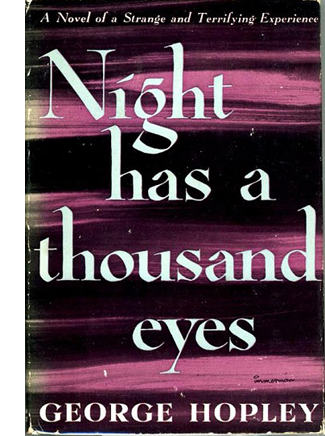 In Night Has a Thousand Eyes, a woman waits in her car while her father visits the telepath over a period of weeks. Each brief scene starts with the same imagery and phrasing, creating a string of rhyming “shots” across three pages.
In Night Has a Thousand Eyes, a woman waits in her car while her father visits the telepath over a period of weeks. Each brief scene starts with the same imagery and phrasing, creating a string of rhyming “shots” across three pages.
I sat there waiting for him, cigarette in my hand, light-blue swagger coat loose over my shoulders. . . .
I sat there waiting for him, rust-colored swagger coat loose over my shoulders. . . .
I sat their waiting for him, plum swagger coat over my shoulders. . . .
I sat there waiting for him, fawn swagger coat over my shoulders. . . .
I sat there waiting for him, green swagger coat over my shoulders. . . .
I sat there waiting for him, black swagger coat over my shoulders, as I’d already sat waiting so many times before.
The modular approach ruling the books’ overall architecture gets carried down into the texture of scenes, creating parallel mini-blocks that convey the daughter’s anxious acquiescence to her father’s obsession.
Woolrich’s literary optics have strong affinities with cinema. We get an effort to mimic a subjective tracking shot as one heroine circles a garden.
The little rock-pool in the center was polka-dotted with silver disks, and the wafers coalesced and separated again as if in motion, though they weren’t, as her point of perspective continually shifted with her rotary stroll. [I Married a Dead Man]
Likewise, a woman approaching a man slowly tapers into focus.
She was up to him eye to eye before he could even take her in in any kind of decent perspective. His visualization of her had to spread outward in concentric, radiating circles for those eyes, staring into his at such close-range.
Brown eyes.
Bright brown eyes.
Tearfully bright brown eyes.
Overflowingly tearful bright brown eyes.
Suddenly a handkerchief had come up to shut them off from his for a moment, and he was able to steal a full-length snapshot of her. Not much more. [The Black Curtain]
This is just showboating, but it’s uniquely Woolrich showboating.
The same goes for a passage struggling to describe people at a bar as if they were framed in the flattening view of a telephoto shot.
There were eight people paid out along it. They broke into about three groups, each self-contained, oblivious of the others, but he had to look close to tell where the divisions came in. Physical distance had nothing to do with it; they all stretched away from him in an unbroken line. It was the turn of the shoulders that told him. The limits of each group were marked by a shoulder turned obliquely to those next in line beyond. They were like enclosing parentheses, those shoulders. In other words, the end men in each group were not postured straight forward, they turned inward toward their own clique. The groupings broke thus: first three, then a turned shoulder, then three again, then another turned shoulder, then finally two, standing vis-à-vis. [Deadline at Dawn]
Few writers would strive so hard to capture the exact look of figures in space. It will take another page for the viewpoint character to realize that a left-handed drinker has stepped out, because one beer mug isn’t empty and the handle is pointing in a different direction than the others.
It’s not hard to imagine such scenes as Hitchcockian POV shots. In Waltz into Darkness, Durand notices a colonel and his lady in the reflection of the “thick, soapy greenish” window of a café. At first the view yields a blob sporting “three detached excrescences”: a feather in a hat, a bustle, and “a small triangular wedge of skirt.” Eventually this monstrosity draws away “into perspective sufficient to separate into two persons.” Conrad’s “impressionism,” aiming to capture the limits of physical point of view, reaches a new height with Woolrich’s account of exact but imperfect vision.
Some provisional answers to my Woolrich questions run like this. The ingenuity of structure and the inherent fascination of the situations somewhat offset the problems of style. Most of his novels tap our primal interest in the hunt, and if things don’t always pay off neatly, the pursuit has enough detours, hurdles, and pitfalls to sustain interest.
And the writing isn’t totally disastrous. There are well-written passages in every Woolrich novel. Many of the howlers arise from the keyed-up emotion he tries to squeeze out of every scene. Others stem from sheer overwriting and padding, and probably the habit Fisher notes of seldom revising. But other errors are a byproduct of his effort to put every bit of action starkly before us. Straining for sensory vividness lures him into clumsiness (“triangular wedge,” as if all wedges weren’t triangular).
More generally, in both virtues and faults, he displays a dogged, frenzied obedience to the narrative traditions he inherited, and an urge to innovate within them, however eccentrically. Henry James asserted that “a psychological reason is, to my imagination, an object adorably pictorial.” A Woolrich character puts it in a typically convoluted way: “Every time you think of anything, there’s a picture comes before you of what you’re thinking about.”
Beyond the books of Nevins and Renzi, valuable appreciations of Woolrich include Nevins’ essay in his collection Cornucopia of Crime: Memories and Summations (Ramble House, 2010), 53-71; Geoffrey O’Brien’s comments in Hardboiled America: Lurid Paperbacks and the Masters of Noir, second ed. (Da Capo, 1997), 97-100; and James Naremore’s essay on his site, “An Aftertaste of Dread: Cornell Woolrich in Noir Fiction and Film.” For a topical overview of Woolrich’s output, see Mike Grost’s entry on him.
I took Steve Fisher’s account of Woolrich’s writing process from “I Had Nobody,” The Armchair Detective 3, 3 (1970), 164. The quotation from Jacques Barzun comes from Barzun and Wendell Hertig Taylor, A Catalogue of Crime, rev. ed. (New York: Harper & Row, 1989), 561. The Raymond Chandler remarks appear in a 1949 letter to Alex Barris in Raymond Chandler Speaking, ed. Dorothy Gardner and Kathrine Sorley Walker (Plainview, New York: Books for Libraries, 1971), 55. I’ve discussed Mitchell Wilson’s essay, “The Suspense Story,” The Writer 60, 1 (January 1947) at greater length in the online essay “Murder Culture.” More generally, Woolrich’s narrative strategies accord with several I chart in Reinventing Hollywood: How 1940s Filmmakers Changed Movie Storytelling, including the notion of the Variorum.
Woolrich’s early, Fitzgerald-influenced novels reveal seeds of the style to come. A random page from Manhattan Love Song (1932) yields a scene of the hero talking to two women: “Instantly I saw a gleam of admiration light each of their four eyes.”
Astonishingly, Woolrich’s prose glitches don’t rate a mention in Bill Pronzini’s hilarious compilations of bad writing, Gun in Cheek: A Study of “Alternative” Crime Fiction (Coward McCann, 1982) and Son of Gun in Cheek (Mysterious Press, 1987). Pronzini tactfully limits his citations of the classics, only mentioning one Raymond Chandler line: “In spite of his weathered appearance, he looked like a drinker.” Pronzini can find no faults in my personal Style canon: Rex Stout, Donald Westlake (here and here), and Patricia Highsmith.
There’s more on these issues in the entry “The 1940s are over, and Tarantino’s still playing with blocks.” I discuss The Window in “The eyewitness plot and the drama of doubt.”
When worlds collide: Mixing the show-biz tale with true crime in ONCE UPON A TIME . . . IN HOLLYWOOD
Once Upon a Time . . . in Hollywood.
Jeff Smith here:
Once Upon a Time…in Hollywood might turn out to be the buzziest film of 2019. Some of this water-cooler talk is due to its unusual status within an ever-enlarging field of true crime stories. (Call it a “not quite true” crime story.) Indeed, the genre is hotter than ever thanks to a bevy of new podcasts, telefilms, and miniseries.
Industry analysts, though, are also keen to interpret Once Upon a Time…in Hollywood’s box office fortunes. As that rare big summer release that is neither a sequel nor a franchise title, it can be seen as a test of whether original content can survive amidst heavily marketed, presold tentpoles.
The lesson so far? To quote William Goldman, “Nobody knows anything.” In The Washington Post, one unnamed studio executive warned, “I don’t see any blue-sky meaning here.” The executive added, “This movie has assets that almost no other film has. That’s what drove it.” At least one of those assets is Tarantino himself, who is a brand, if not a franchise. Fans know what to expect in a Tarantino film, which is why the film is sui generis when it comes to this summer’s slate. Due to its unique IP, it can’t really be compared with films like Men in Black International or Spider-man: Far from Home. Yet thanks to Tarantino’s larger than life presence, it also isn’t Long Shot or Booksmart or Stuber.
Once Upon a Time…in Hollywood is catnip to Tarantino nerds like me. It has the usual surfeit of references to obscure films and television shows. Some of these are deftly interwoven into the story itself. It boasts a carefully curated soundtrack that unearths “some-hits” wonders. It also contains scenes depicting nasty yet comical violence, a hallmark of Tarantino’s work ever since Reservoir Dogs.
At first blush, Once Upon a Time…in Hollywood would seem to be Tarantino’s most linear film. Yet it still displays certain continuities with his oeuvre in terms of story structure and technique. Although the film eschews the chapters and title cards found in Pulp Fiction and Kill Bill, it still contains elements of what David calls “block construction.” In the case of Once Upon a Time…in Hollywood, it is all about threes. The plot is structured around three days in the winter and summer of 1969: February 8th, February 9th, and August 9th. Each “chapter” is introduced showing the date via superimposed text. And all three chunks of narrative crosscut among the activities of three actors – Sharon Tate, Rick Dalton, and Cliff Booth – as they try to adapt to changes in the film and television industries.
If all of this assures that you’d never mistake Once Upon a Time…in Hollywood as the work of another director, other elements show Tarantino striking out in new directions. Chief among these is his mash-up of two normally distinct story types: the show-biz tale and the true crime yarn. Think of it as Singin’ in the Rain meets In Cold Blood. In what follows I outline some of the ways that Tarantino adapts his signature style to two well-established storytelling options: the multiple draft narrative and the network narrative. I also consider the effects Tarantino’s counterfactual history has on the conventions of the show-biz tale and the celebrity biopic.
My analysis contains major spoilers. If you haven’t seen Once Upon a Time…in Hollywood, stop reading now!
My world and welcome to it
Quick trivia question: what actor was on the cover of TV Guide during the week that Sharon Tate was murdered by the Manson family? Sharp viewers of Once Upon a Time…in Hollywood should know the answer. We see Tate’s housemate, Woychiech Frykowski, reading that issue of the magazine as he watches Teenage Monster on late night television.
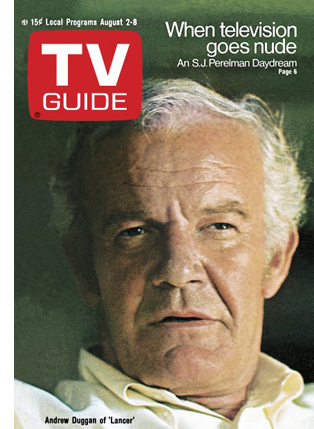 Give up? It was character actor Andrew Duggan, who played the cattle baron Murdoch Lancer on the TV show of the same name. Yes, that Lancer! The same one that featured Rick in a guest spot some six months earlier.
Give up? It was character actor Andrew Duggan, who played the cattle baron Murdoch Lancer on the TV show of the same name. Yes, that Lancer! The same one that featured Rick in a guest spot some six months earlier.
Tarantino’s film treats this little bit of pop culture ephemera as an uncanny coincidence. It simply becomes yet another way that he can intertwine the destinies of his three protagonists. But that brief shot got me thinking: did Tarantino start with the idea that he’d recreate whatever series was featured on TV Guide the week Tate was killed?
If so, Rick might have appeared just as easily as an aspiring cartoonist next to William Windom on the NBC sitcom, My World and Welcome to It. The show debuted just six weeks after Tate’s death. It is not unthinkable that NBC would have pushed for a cover on TV Guide in an effort to promote the premiere. Yet Tarantino’s counterfactual history in Once Upon a Time…in Hollywood would have been vastly different if that had been the case.
Did Tarantino really base his screenplay on this conceit? I doubt it. Lancer fits so snugly into the world that the director captures onscreen that it is not be so easily replaced. Tarantino seems to have a nostalgic fondness for the show, much as I did in my wasted youth. (I recall having a Lancer lunchbox at age six.) Production designer Barbara Ling describes the steps she took to recreate Lancer’s mix of Spanish/Western design. This involved adding adobe storefronts to the wooden ones, and substituting iron coils for wooden pegs on the saloon’s staircase. Ling added, “This was a [rich] cattle town and the buildings are two and three stories. It’s not Deadwood.”
Many critics have characterized Once Upon a Time…in Hollywood as another hangout movie. This is Tarantino’s designation for a film that is leisurely paced, fairly light on plot, and mostly gives the audience a chance to spend time with the characters. Indeed, because of these qualities, reviewers often compare Once Upon a Time…in Hollywood to Jackie Brown, a film that Tarantino himself compared to Rio Bravo, which was Howard Hawks’ hangout movie.
The resemblances don’t stop there. Once Upon a Time…in Hollywood’s three-headed protagonist bears certain similarities to Jackie Brown’s Jackie, Ordell, and Max.
Yet while watching Once Upon a Time…in Hollywood, I felt this film, more than any of Tarantino’s others, was an exercise in world-building. Normally we associate that term with sci-fi, fantasy, and comic book movies. It is especially important for transmedia properties where the fictional universe depicted exceeds the bounds of any individual film, television series, book, or video game.
Once Upon a Time…in Hollywood is also an alternate history, a type of speculative fiction also common in sci-fi and comic book stories. The Avengers: End Game and Spider-man: Into the Spiderverse are both relatively recent examples. This suggests a loose affiliation between Once Upon a Time…in Hollywood and other blockbusters even as Tarantino tweaks that formula by situating his speculative fiction within the generic framework of true crime.
Tarantino largely avoids the industrial motivations behind these two narrative techniques commonly seen in tentpoles. Instead, he simply recreates the pop culture world of his youth. In doing so, the director’s real world, his “realer than real” universe, and his “movie movie” universe all collide.
Keepin’ it real (and realer)
As Tarantino has explained in interviews, the “realer than real” universe is an alternate reality close to our own where his fictional characters can intermingle with real people. The “movie movie” universe, on the other hand, is a more overtly fantastic world closer in spirit to comic books or exploitation films. The characters have unusual abilities or even supernatural powers. The “movie movie” thus downplays the realistic motivations usually found in the “realer than real.” In Tarantino’s oeuvre, Reservoir Dogs and True Romance exemplify the “realer than real.” Kill Bill and From Dusk to Dawn are instances of the “movie movie.”
Each universe features a web of connections that can link particular tales together. For example, Kill Bill’s Sheriff Earl McGraw and his son Edgar pop up in Death Proof. Similarly, Lee Donowitz, the cocaine-sniffing movie producer in True Romance, is purportedly the son of Sgt. Donny Donowitz, the “bear Jew” in Inglourious Basterds.
In Once Upon a Time…in Hollywood, the most obvious references to these two Tarantino universes are the fictional brands he has created. During the end credits, we see Rick in a TV ad for Red Apple cigarettes. According to a Tarantino wiki, “ads or packs of these flavorful smokes” can be seen in The Hateful Eight, Inglourious Basterds, Planet Terror, Kill Bill, Pulp Fiction, From Dusk till Dawn, Four Rooms and Romy and Michele’s High School Reunion. (The latter is an obvious outlier. Yet the Red Apple nod was likely an in-joke related to Tarantino’s offscreen romance with Mira Sorvino, who played Romy.)
Similarly, Tarantino’s fictional fast food chain, Big Kahuna Burger, appears on a bus billboard in Once Upon a Time…in Hollywood. It previously was featured in a memorable scene in Pulp Fiction. (“That’s a tasty burger!”) But it had already debuted as a delicious snack devoured by Mr. Blonde in Reservoir Dogs. Big Kahuna later comes back in two other Tarantino films, From Dusk Till Dawn and Four Rooms, as well as Romy and Michele’s High School Reunion.
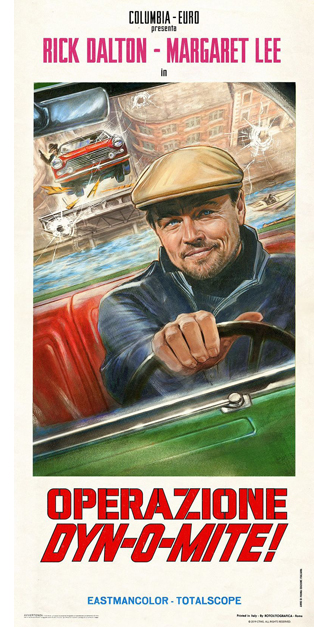 Other references to the “realer than real” are more arcane. In a montage sequence where Randy the Stuntman summarizes Rick’s experience starring in Italian films, we see a poster for Operazione Dy-no-mite, a James Bond knockoff directed by Antonio Margheriti. Fans of Inglourious Basterds will recognize “Antonio Margheriti” as the alias Donny Donowitz uses for the premiere of Nation’s Pride.
Other references to the “realer than real” are more arcane. In a montage sequence where Randy the Stuntman summarizes Rick’s experience starring in Italian films, we see a poster for Operazione Dy-no-mite, a James Bond knockoff directed by Antonio Margheriti. Fans of Inglourious Basterds will recognize “Antonio Margheriti” as the alias Donny Donowitz uses for the premiere of Nation’s Pride.
Much of the fun of Once Upon a Time…in Hollywood comes from the way Tarantino overlays these three universes to create a singular fictional world. For example, at one point we learn that Rick was considered for the role of Captain Virgil Hilts, the part played by Steve McQueen in John Sturges’ The Great Escape. Tarantino even inserts digitally altered footage of The Great Escape to show us a scene of Rick as Hilts. Since Rick claims he never met Sturges, this moment appears to represent an imagined version of the film that could exist in some type of alternate history. It invites us to consider how different Rick’s career might have been had fortune smiled upon him instead of McQueen.
To disentangle this knot, one must surmise that The Great Escape and Steve McQueen belong to both the real world and the “realer than real” world. Yet the scene of McQueen at the Playboy mansion and Rick describing his missed opportunity can only belong to the “realer than real.” And the character of Hilts himself exists only in the “movie movie” world. Hilts shares this status along with other characters Rick plays onscreen, such as Bounty Law’s Jake Cahill and The FBI’s Michael Murtaugh. After all, movie magic enables Cliff Booth to stand-in for Rick for scenes involving physical action. That two actors can play the same character within the same scene suggests that fictional personae in cinema have a unique ontological status quite different from the real world.
Arguably, the scene where Sharon Tate watches herself in The Wrecking Crew raises even more vexing issues about what is real and what is fictional. Unlike the clip from The Great Escape, the theatre screening shows the real Sharon Tate playing the character Freya in The Wrecking Crew. The fictional Sharon Tate watches the real Sharon Tate, along with the rest of the Bruin Theater’s audience. Yet, because Margot Robbie only pretends to be Sharon Tate for Tarantino’s camera, she doesn’t really watch herself playing the role. Obviously, Robbie belongs only to the real world. Yet Sharon Tate, as both an actual person and a fictional character, inhabits both the real world and the “realer than real world.”
Here the film indulges the Bazinian conceit that cinema has indexical properties. While making The Wrecking Crew, the film camera captured an imprint of the real Sharon Tate that preserved her being beyond the reaches of time and even death. In Once Upon a Time…in Hollywood, this moment is both joyful and sad. The viewer imagines the thrill that Tate feels in watching herself on the big screen, basking in the glow of incipient stardom. Yet the delight we experience is colored by our knowledge of what happened to the Sharon Tate seen falling on Dean Martin’s camera case. Unlike Robbie’s character, that Tate is doomed to a grisly death at the hands of psychopaths.
By film’s end, however, we are forced to reevaluate where Sharon Tate fits into Tarantino’s universe. When Cliff and Rick thwart the attack of Tex Watson, Susan “Sadie” Atkins, and Patricia “Katie” Krenwinkel, both Sharon Tates appear to move solely to the realm of the “realer than real.” Like the fictional Sharon Tate played by Robbie, the actress who appeared in The Wrecking Crew also lives on in a parallel universe created by the forking of time. And the fate of that character remains completely undetermined. Now fully a part of the “realer than real,” Tarantino’s Sharon Tate might eventually snort cocaine with movie producer Lee Donowitz or bum a Red Apple cigarette from Pulp Fiction’s Mia Wallace.
Once she joins the “realer than real,” almost any fate you could imagine for Sharon Tate seems possible. And it is that sense of the actress’ unlimited horizons that gives the ending of Once Upon a Time…in Hollywood its resonance. Sergio Leone’s Once Upon a Time films always situated viewers in the realm of myth. Once Upon a Time…in Hollywood, on the other hand, evokes the fairy tale.
Tarantino is known for his experimentation with narrative, and the simplicity of Once Upon a Time…in Hollywood’s “what-if” scenario could seem like a retreat from the formal play seen in his earlier films. Yet I’d argue that Tarantino’s merging of fact and fiction is even more audacious in certain respects. It strikes me as an unconventional example of what David calls “multiple draft narratives,” like Krzystof Kieslowski’s Blind Chance or Peter Howitt’s Sliding Doors. Once Upon a Time…in Hollywood gives us a second draft of history, albeit one where the key decision point is saved almost until the end of the film. And unlike Blind Chance or Sliding Doors, Tarantino doesn’t need to tell us what the different outcomes are for each of these tales. The first draft of history is one we already know.
In fact, the notion of multiple drafts offers a useful lens for all three films in Tarantino’s “counterfactual” trilogy. (The other two are Inglourious Basterds and Django Unchained.) In Groundhog Day, Source Code, and Edge of Tomorrow, each iteration of the basic situation shows the protagonist inching toward his goals. They gradually progress to the point where they are able to alter destiny, either theirs or the world’s or both.
Inglourious Basterds, Django Unchained, and Once Upon a Time…in Hollywood all present images of history not as it was, but as it should have been. Such counterfactual histories run counter to the norms of speculative fictions that often present us with dystopian worlds we were lucky to avoid. (Think Philip K. Dick’s The Man in the High Castle, Robert Harris’ Fatherland, or Kevin Willmott’s “mockumentary” C.S.A.: The Confederate States of America.) All of these stories depend upon our knowledge of the first draft of history. Yet Tarantino gives us second drafts that right particular historical wrongs in either small or large measure. In doing so, Tarantino gives us versions of history that are closer in spirit to his favorite movies. All three films in the “counterfactual” trilogy feature tidy resolutions. Once Upon a Time…in Hollywood, however, is even more self-conscious about the way Tarantino’s second draft of history takes the form of a “movie movie” climax. The realer-than-real version is the one we ought to prefer.
Paging Mr. Melcher, Mr. Terry Melcher…
If Tarantino’s conflation of fact and fiction evokes certain traits of the multiple-draft narrative, his vivid recreation of Hollywood circa 1969 illustrates another type of story popularized in American independent films and various art cinemas: the network narrative.
Tarantino has broached this form before in Inglourious Basterds. There he moves back and forth between three mostly independent storylines: 1) the Basterds’ guerrilla campaign against German soldiers, 2) Archie Hicox and Bridget von Hammersmarck’s initiation of Operation Kino, and 3) Shosanna’s plan to avenge her family’s deaths during the premiere of Nation’s Pride. SS officer Colonel Hans Landa threads through all three storylines. He orders the killing of Shosanna’s family in the opening scene. Later he shares apple streudel with Shosanna in a Paris café. Landa also investigates the scene where Hicox has been killed. In the climax, he interrogates Bridget in a scene that contains a grim allusion to Cinderella’s lost slipper.
Finally, Landa negotiates a deal with Aldo Raine’s superiors that guarantees his immunity from prosecution for war crimes.
Once Upon a Time…in Hollywood is obviously much less plot-driven than Inglourious Basterds. Yet, as noted above, it shares a similarity in the way it interweaves the stories of three characters: Rick, Cliff, and Sharon.
It’s frequently said that Hollywood is a company town. By situating all three characters within the film and television industries, Tarantino tacitly stays faithful to that truism. The protagonists’ shared profession also facilitates the kinds of attenuated links between stories commonly found in network narratives.
Part of the fun of Once Upon a Time…in Hollywood comes in recognizing the “six degrees of separation” that join all of these people, both real and fictional, in the same entertainment ecosphere. Take, for instance, one decidedly minor character: actress and singer Connie Stevens, played by Dreama Walker. At the Playboy Mansion party, Stevens listens to Steve McQueen explain the romantic triangle that has Sharon living with her current husband, Roman Polanski, and her ex-boyfriend, Jay Sebring. Stevens, though, is the ex-wife of actor James Stacy, who played Johnny Madrid in Lancer. Stacy (played in our film by Timothy Olyphant) is Rick Dalton’s scene partner for the episode of Lancer that Dalton hopes can spur his comeback. Dalton is Sharon Tate’s neighbor on Cielo Drive, the same house that Charles Manson targets as the site of the “family’s” first murder. This circuit even loops back on itself. When Stacy and Dalton first meet on set, Stacy asks Rick whether it was true that he almost got a part in The Great Escape, the same part played by McQueen.
Two characters in Once Upon a Time…in Hollywood serve as nodes that connect all three storylines together. The first is Cliff, Rick’s stunt man and gofer. Although not a resident at Cielo Drive, he spends a lot of time in Rick’s home and thus is privy to what happens in Sharon’s abode. This is especially evident when Cliff repairs Rick’s fallen TV antenna. The camera is aligned with him as he overhears Sharon playing a Paul Revere and the Raiders album. He also notices Charles Manson approaching the Polanski residence. Tarantino’s casting of Damon Herriman as Manson is likely an allusion to the television show, Justified. Herriman played Dewey Crowe alongside Olyphant.
Justified was also an adaptation of Elmore Leonard’s “Raylan Givens” books. Tarantino has long admired Leonard’s work as a writer of both westerns and crime novels.
Employing a redundancy that befits Hollywood storytelling, Cliff gets linked to Sharon’s storyline in other ways. While working as Rick’s stunt man for an episode of The Green Hornet, he gets involved in a dust-up with Bruce Lee. Lee gave Sharon Tate some pointers on fighting as she prepared for her role in The Wrecking Crew. And in real life, the martial arts legend was recommended for the role of Kato on television’s The Green Hornet by Sebring, Tate’s former boyfriend.
Perhaps Cliff’s most important role in the film’s network involves his dalliance with Pussycat, one of the many young women who viewed Manson as a kind of guru. Cliff picks up Pussycat as a hitchhiker and gives her a ride back to the Spahn ranch. Having worked on the ranch back when it was an active production site, Cliff grows concerned for the safety of its owner, George Spahn. Cliff notices how the Manson clan has taken over and is troubled by its weird vibe. Determined to see George for himself, Cliff forces his way into George’s house over the objections of the Manson girls, especially Squeaky. George seems careworn, but Cliff finds that there is little he can do for him.
When Cliff sees a pocketknife sticking out of his front tire, he confronts Clem, one of Manson’s followers. The conflict becomes physical. Cliff breaks Clem’s nose with one punch and then proceeds to beat him to a bloody pulp.
This proves to be a dangling cause that gets resolved in the film’s climax when Cliff recognizes Tex, Sadie, and Katie as people he met at the Spahn ranch.
The other character who links the storylines together is one we never see: record producer Terry Melcher. Melcher is the “Terry” that Manson mentions when he visits Cielo Drive in the scene described above. Later, Tex reminds Sadie, Katie, and Linda that Charlie directed them to go to the place where Terry Melcher lived and kill everyone inside.
Although these are the only explicit references to Melcher, he is indirectly represented in several other aspects of the film. Here it helps to know a little about Melcher’s career and Manson lore. Even if Melcher’s name draws a blank, you likely know many of the bands he worked with: the Byrds, the Mamas and the Papas, and Paul Revere and the Raiders.
All these musicians crop up in one way or another in Once Upon a Time…in Hollywood. Melcher’s last major credit of the 1960s was as producer of the Byrds’ Ballad of Easy Rider. When Rick berates Tex for parking his car on Cielo Drive, he yells, “Hey, Dennis Hopper! Move this fucking piece of shit!” Rick’s insult fits with his general disdain for hippies. But it also alludes to Easy Rider by comparing Tex’s look to that of Hopper’s character, Billy.
Two of the Mamas and the Papas – Michelle Phillips and Cass Elliot – both appear in the party scene at the Playboy mansion.
We also hear the Mama and the Papas’ big hit, “California Dreaming” in a cover version by Puerto Rican singer José Feliciano. And when the car driven by Tex crawls up Cielo Drive, the music issuing from the Polanski residence is the Mamas and the Papas’ “12:30: Young Girls are Coming to the Canyon.” Even before Tex’s directive to the Manson girls, Tarantino has given us a subtle reminder that Melcher was Charlie’s intended, if indirect, target.
Finally, Sharon plays Paul Revere and the Raiders’ “Good Thing” and “Hungry” on a hi-fi in her bedroom.
The choice of music is especially fitting since the band’s lead singer, Mark Lindsay, lived in the same house on Cielo Drive with Melcher and his then girlfriend, Candice Bergen.
Beyond these musical references, Melcher’s history with Manson informs Once Upon a Time…in Hollywood in another way. Melcher recorded some demos of Manson’s songs, and even discussed making a documentary about Manson’s commune at the Spahn Ranch. In testimony at trial, Melcher said that any possibility of a record contract with Manson was sundered when Charlie asserted that he’d never join a musicians’ union. Manson’s staunch refusal was rooted in his desire to avoid entanglements with the establishment. Yet union membership was a condition for any contract with Melcher’s label, Columbia records. Another factor in Melcher’s decision was his assessment of Manson’s talent. Charlie couldn’t sing.
Although Melcher publicly stated that he only considered Manson’s musicianship, he privately expressed concerns about Charlie’s mental stability. These were heightened when he visited the Spahn Ranch and witnessed Manson in a physical altercation with a drunken stunt man. Tarantino more or less recreates this episode in his film, substituting Cliff for the unnamed stunt man and the hapless Clem for Charles Manson.
More importantly, Melcher is the son of screen legend Doris Day and stepson of agent/manager/producer Martin Melcher. In Once Upon a Time…in Hollywood, he becomes the ideal, if absent, symbol of the combined worlds of music, television, and film that Tarantino so lovingly details.
How the West was lost
Los Angeles circa 1969 is presented as the epicenter of the American entertainment industries. It’s a place where a hairdresser like Jay Sebring rubs shoulders with action stars, TV cowboys, ingénues, film directors, and pop stars –and make $1000 a day to boot! The constant stream of hits from KHJ radio is as ubiquitous as the many movie posters, billboards, and theater marquees that feature Hollywood’s latest and greatest.
Tarantino’s press kit for Once Upon a Time…in Hollywood makes reference to Joan Didion’s famous observation in “The White Album” that “the Sixties ended abruptly on August 9, 1969, at the exact moment when word of the murders on Cielo Drive traveled like brushfire through the community.” Most critics take Didion’s reference to the Sixties as shorthand for the end of the “peace and love generation.” Yet Tarantino’s slightly revisionist take suggests it’s not only the youthquake that died, but also a certain strain of Hollywood filmmaking that passed with it.
Although I don’t doubt their historical accuracy, the litany of titles that appear throughout Once Upon a Time…in Hollywood feels as curated as any of Tarantino’s music soundtracks. Some, like 2001: A Space Odyssey, are films that entered the canon of great sixties cinema. Others, like The Night They Raided Minsky’s, are early films by directors who’d later achieve greatness. (In this case, William Friedkin, who won an Oscar in 1972 for The French Connection.)
But many, like Lady in Cement, Tora, Tora, Tora!, Krakatoa: East of Java, Mackenna’s Gold, C.C.& Company, and even The Wrecking Crew, are largely forgettable movies.
Tarantino clearly has affection for all of the drive-in theaters and Hollywood picture palaces where these titles played. But the titles themselves are evidence of the industry’s struggle to adapt to new tastes and a rapidly changing media landscape. Old-school show biz types, like Dean Martin and Frank Sinatra, continued their success as singers and television personalities. But their careers as actors had functionally ended by 1969. And the efforts to keep them relevant often seemed either strikingly anachronistic or just plain weird.
In the opening scene of Lady in Cement, Frank Sinatra fights off a small school of sharks while he is examining the body of a nude woman who, like Luca Brazzi, sleeps with the fishes. And yes, the scene is as ludicrous as it sounds. If this is what became of Hollywood’s once great tradition, it is hard not to think we should just let it pass.
Yet, the fear of obsolescence also explains the oversize role that Tarantino gives to the Western as part of this changing landscape. True Grit and The Wild Bunch were among the summer of 1969’s biggest hits. Butch Cassidy and the Sundance Kid would eventually become the year’s top-grossing film. All three Westerns feature cowboy heroes that are either aging, outmoded, or both. They reminded contemporary viewers that horse riders would soon yield to horseless carriages, the lone bounty hunter would soon be supplanted by paramilitary detective agencies, and the humble six-shooter can’t match the lethal power of a Mexican army machine gun.
In retrospect, though, the popularity of the Western in 1969 represents the genre’s last gasp. Studios continued to make Westerns during the 1970s, but only three – Jeremiah Johnson, The Outlaw Josey Wales, and The Electric Horseman – would surpass $10 million in rentals in the entire decade.
On television, such long-running series as Gunsmoke, Bonanza, and The Virginian had their last round-ups. The networks tried their hands at new Westerns, like Alias Smith and Jones (below), Hec Ramsey, Dirty Sally, and Lancer, but they were all short-lived. At the start of the 1980s, the genre was completely moribund. Subsequent efforts to recapture the Western’s former glory were mostly the equivalent of flogging a dead pony.
As a total cinephile, Tarantino is entirely aware of this aspect of the genre’s history. This is signaled quite explicitly in the decrepit condition of the Spahn Movie Ranch. Yet Tarantino also uses Rick’s career arc to signify its downward trajectory.
No character in Once Upon a Time…in Hollywood is as strongly associated with the Western as Rick. His home is filled with collectibles like his Hopalong Cassidy coffee mugs. His walls are decorated with posters for The Golden Stallion and A Time for Killing. On set, he reads pulp oaters like Ride a Wild Bronc to relax between takes.
By using Rick to dramatize the twin declines of both Old Hollywood and its “bread and butter” genre, the narrative arc of Tarantino’s drugstore cowboy is one suffused with nostalgic melancholy. The key moment in Once Upon a Time…in Hollywood occurs when Rick breaks down telling the story of Easy Breezy to Trudi Fraser, his Lancer co-star. He describes Easy “coming to terms with what it’s like to feel slightly more useless each day.”
The various threads of Once Upon a Time…in Hollywood’s network finally knot together in the Manson family’s attack on Cielo Drive. At the moment of truth, it is telling that Rick reaches not for a firearm, but for the prop flamethrower he wielded in The 14 Fists of McCluskey. By recalling the moment when Rick shouts, “Anyone here order fried sauerkraut?”, Tarantino reminds us that violent spectacle and snappy quips will eventually replace the Western’s ritualistic showdowns.
Still, it is a musical allusion to the Western that gives Once Upon a Time…in Hollywood its final grace note. Cliff and Rick have thwarted the Manson family’s attack. The ambulance takes Cliff to the hospital. Rick offers an explanation of what just happened to his neighbors. Jay recognizes Rick as television’s Jake Cahill. Via the intercom, Sharon invites him to come up for a drink. As Rick walks to the house, we hear the start of Maurice Jarre’s “Lily Langtry” [sic] from his score for The Life and Times of Judge Roy Bean.
John Huston’s film begins with an expository title shown below that highlights the western’s tendency toward self-mythology. It is especially apt for Once Upon a Time…in Hollywood’s counterfactual history.
Jarre’s cue, though, appears in a scene where the renowned actress Lillie Langtry finally visits Judge Bean’s Texas town. Langtry is given a tour of the Bean’s house, now converted into a museum that also acts as a shrine to her. Bean worshipped Langtry, but tragically dies before he gets to meet her. Tarantino inverts both Huston’s sad ending and its dramatization of missed opportunity. By altering the course of history, the cowboy in Once Upon a Time…in Hollywood gets to be the real-life hero rather than the TV heavy. Rick also gets to meet the actress he’s admired from afar. Rick and Sharon are still both married to other people. But their chance meeting in the film’s epilogue feels more than anything like a dream fulfilled.
A star is unborn
In the previous section, I dwelt on the role of the Western in Once Upon a Time in Hollywood because of its symbolic significance in capturing a particular historical moment. But Tarantino borrows quite freely from another narrative prototype: the show-biz tale. In fact, while walking out of Once Upon a Time…in Hollywood, I wondered aloud if it was Tarantino’s twisted take on A Star is Born.
Like A Star is Born, Once Upon a Time…in Hollywood centers on a male performer whose career has started to decline and a female newcomer whose star is on the rise. Moreover, Rick’s drinking problems create an obstacle to his comeback in much the same way that alcohol contributes to the downfall of the male protagonists in all four versions of A Star is Born.
Tarantino, though, subtly alters this template in two ways. First, he depicts his two stars as neighbors rather than as a romantic couple. Secondly, he cleverly depicts Rick’s career arc as an inverse mirror of Sharon’s.
Tate was an Army brat who grew up in Europe. Her earliest work was as an extra in Italian films. She moved to Hollywood in 1962 and got her break playing Jethro Bodine’s girlfriend on The Beverly Hillbillies. In the mid-sixties, Tate made the move to films, appearing in Eye of the Devil and The Fearless Vampire Killers.
It was during production of the latter that Tate met her future husband, Roman Polanski. Tate’s role in Valley of the Dolls further enhanced her status as an “up and comer.” In 1968, Tate earned a Golden Globe nomination in the category of “Most Promising Newcomer — Female.”
In direct contrast, Rick’s career begins in Hollywood and ends in Italy. Rick enjoys early success with Bounty Law and The 14 Fists of McCluskey. But soon finds himself reduced to guest star roles on television. Against his better judgment, Rick agrees to star in four Italian quickies. Two of these are spaghetti westerns directed by Sergio Corbucci, a Tarantino fave who created the popular “Django” character. Rick returns to Hollywood but his future is uncertain. He could be the next Clint Eastwood, star of A Fistful of Dollars and The Good, the Bad, and the Ugly. Or he could be the next Richard Harrison, star of $100,000 Dollars for Ringo and Secret Agent Fireball.
If this were all there was to the comparison, it would hardly be worth mentioning. But Tarantino hints at other parallels through a much more obscure and convoluted cinematic reference. An auteur as shrewd as Tarantino would undoubtedly remember that the Rolling Stones’ “Out of Time” –used in Once Upon a Time…in Hollywood under shots of Rick’s return from Rome – was previously featured in the opening sequence of Hal Ashby’s Coming Home.
The connection to Ashby’s film is strengthened by the casting of Bruce Dern as George Spahn, a role originally intended for Burt Reynolds. Early in his career Dern played Jane Fonda’s uptight, martinet husband in Coming Home. More importantly, during Coming Home’s climax, Dern’s character commits suicide by wading into the ocean to drown himself, just as James Mason does at the conclusion of George Cukor’s version of A Star is Born.
Which brings us back to Once Upon a Time…in Hollywood’s controversial ending. Earlier I discussed the resemblance between its counterfactual history and multiple draft narratives. Here I want to discuss it as an illustration of the caprice of fame.
Much more than the endings of Inglourious Basterds and Django Unchained, the climax of Once Upon a Time…in Hollywood feels both resolved and unresolved. Hitler’s violent death in Inglourious Basterds surprised audiences who first saw it in theaters. Yet the historical record indicates that the Basterds simply saved Hitler the trouble of later killing himself and his wife, Eva Braun. At the conclusion of Django Unchained, the protagonist’s revolt clearly hasn’t ended slavery as a “peculiar institution.” But its story of personal revenge remains deeply satisfying.
The ending of Once Upon a Time…in Hollywood left me with more questions than answers. I get it. Sharon Tate lives instead dying at the hands of the Manson family. Tarantino gives us the Hollywood happy ending that this story lacked in reality. But what’s next?
Do the deaths of Tex, Sadie, and Katie mean that Leno and Rosemary LaBianca also survive? Maybe. Perhaps the loss of three members of the cult might cause the others to reevaluate their loyalty to Manson. Perhaps Manson himself would reevaluate his plan to trigger a race war.
But maybe not. If Manson were the hero of Tarantino’s grindhouse climax rather than its villain, one could easily imagine the film running another twenty minutes with Manson vowing to get even. You might imagine it as something like the surprising “second climax” of Django Unchained. After mourning the loss of his compatriots, Charlie would proclaim. “The fires of Hell will descend upon the Hollywood hills. This time it’s personal.”
Perhaps the bigger question is whether Sharon continues to be the “It” girl during the next phase of her career. The allusions to A Star is Born suggest a steady upward trajectory. But the reality is that success depends upon a certain amount of luck. It is never assured. A few box office bombs and Sharon Tate might be reduced to the same sort of TV guest spots that Rick is doing.
In this way, the ending of Once Upon a Time…in Hollywood asks us to consider a potential paradox. Did Sharon Tate become more famous in death than she ever would have been in life?
The theme of talent tragically cut down in the prime of life is a hoary cliché of the celebrity biopic. Tarantino is smart to steer clear of it. Yet whenever we watch a film like Prefontaine, Beyond the Sea, or Lenny, one starts to wonder, “Would anyone bother to make this film if its subject had lived?”
To be sure, the totality of Once Upon a Time…in Hollywood shuns any pat answer. Cass Elliot of the Mamas and the Papas died at age 32. Initial reports said she choked on a ham sandwich in the midst of having a heart attack. I remember the media reports when Mama Cass passed in 1974. But does anyone who didn’t live through that moment?
James Stacy, star of Lancer, nearly died in a deadly motorcycle accident. (Tarantino hints at this fate by showing Stacy, sans helmet, riding his steel horse away from his trailer.) Stacy survived, but lost an arm and a leg as a result of his near fatal injuries. He eventually made a comeback in 1977 and even earned an Emmy nomination for his work on Cagney and Lacey.
Yet, if you mention James Stacy during dinner conversation tonight, I suspect your companion will ask, “Who?”
And then there is the scene where Pussycat and the other Manson girls walk past a large mural of James Dean in his iconic pose from Giant. Dean was certainly famous during his lifetime. But he became a legend at age 24 after his Porsche Spyder collided with another car, snapping his neck.
Would Sharon Tate have achieved stardom had she lived? God only knows. I certainly don’t. I do know one thing, though. Being a victim of the “crime of the century” preserved Tate’s image in popular memory with a vividness that very few human beings on this earth ever achieve.
Margot Robbie’s performance as Tate is extraordinary. She reminds modern viewers of the verve, spirit, and sensuality that Sharon brought to the screen. Yet it is the image of Tate as a tragically murdered heroine that Tarantino, like Mark Macpherson in Laura, appears to have fallen in love with. And it is this image that continues to haunt me some fifty years after Tate’s death.
Thank you to David and Kristin for their comments onf an earlier draft of this post. Thanks also to JJ Bersch and Maureen Rogers for letting me bounce some of ideas off them.
Vincent Bugliosi’s Helter Skelter: The True Story of the Manson Murders remains the most comprehensive account of the Tate-LaBianca murders. Tom O’Neill, though, has spent the last 20 years investigating Manson’s crimes. His new book, Chaos: Charles Manson, the C.I.A., and the Secret History of the Sixties, claims that Bugliosi’s investigation was deeply flawed. Instead, his research suggests that Manson was a drug trafficker and C.I.A. operative. For O’Neill, the notion that Bugiliosi saved Los Angeles from a hippie death cult is wrong. The motive for the crimes was both simpler and more quotidian. All of Manson’s murders were the result of drug deals gone wrong. An interview with O’Neill can be found here.
The story that Terry Melcher witnessed a fight at the Span Movie Ranch between Charles Manson and a drunken stunt man sounds apocryphal. Yet it appeared in The Telegraph’s obituary for Melcher, which was first published in 2004. I haven’t been able to independently corroborate that story with another source. However, even if it isn’t true, it is part of Manson lore. I saw the same story repeated on at least three other websites. Doris Day’s death in May spawned the publication of a handful of articles about her relationship with Terry. They can be found here, here, and here. An brief overview of Melcher’s career as a record producer can be found in Rolling Stone’s obituary.
For those interested in learning more about Sharon Tate’s life, I recommend Sharon Tate: Recollection. It was written by Tate’s mother Debra. It also features a foreword by her husband, Roman Polanski.
Mark Harris’s Pictures at a Revolution: Five Movies and the Birth of the New Hollywood and Peter Biskind’s Easy Riders, Raging Bulls survey the momentous changes taking place in the film industry during the late 1960s.
Bruce Fretts provides a fairly thorough overview of Once Upon a Time…in Hollywood’s voluminous pop culture references.
Several articles have also appeared that address different aspects of the film’s production. An interview with choreographer can be found here. Cinematographer Robert Richardson and production designer Barbara Ling detail their efforts to recreate the sets of the TV show Lancer here. Richardson also discussed Once Upon a Time…in Hollywood’s visual influences in a Hollywood Reporter podcast.
An interview with Mary Ramos, Once Upon a Time…in Hollywood’s music coordinator, can be found here. Guides to Once Upon a Time…in Hollywood’s music soundtrack can be found here, here, and here.
An analysis of Once Upon a Time…in Hollywood’s box office implications is found here.
Finally, the release of Once Upon a Time…in Hollywood has occasioned a number of think pieces that address aspect of the film’s counterfactual history and its identity politics. Here philosopher David Bentley Hart discusses the moral implications embedded in Tarantino’s counterfactual trilogy.
Once Upon a Time…in Hollywood’s gender politics is addressed here. The author, Aisha Harris, compares Tarantino’s depiction of Sharon Tate to other female characters in his filmography. Finally, zeitgeist readings of Once Upon a Time…in Hollywood in relation to the current political landscape can be found here and here.
Once Upon a Time . . . in Hollywood.
REINVENTING HOLLYWOOD in paperback: Much ado about noir things
From “The Killer,” Spirit Comics (8 December 1946), by Will Eisner and studio.
DB here:
This is my final effort to cram my latest book down the resisting gullet of the reading public. Reinventing Hollywood: How 1940s Filmmakers Changed Movie Storytelling has just come out in paperback and I’ve been using our blog to trace out some relevant ideas that surfaced in recent books and DVD releases. The first entry dealt with some general issues, the second with popular culture’s drive toward variation, the third with craft and auteurism. This one has murder on its mind.
Noir as mystery and mystique
Sorry, Wrong Number (1948).
Crime looms large in Reinventing Hollywood. But I forsake the usual category of film noir. It didn’t exist as a concept for the filmmakers or audiences of the day. It’s the creation of critics, first overseas and then, much later, here at home. That doesn’t make the category invalid, though. Many art-historical categories (Baroque, Gothic) are later inventions, and those can be illuminating. Still, I think we gain some understanding if we situate our inquiry, for a time at least, at the level of what people seemed to be trying to do at the time.
Put it another way. By focusing on noir as the model of Forties narrative, we miss the ways in which the films we pick out under that rubric participate in wider trends. We miss, for instance, the new importance of mystery in all plotting of the period.
In the 1930s, mystery was mostly confined to detective stories. Think of your prototypical 1930s movie; it’s unlikely to have a mystery at its center. (Okay, maybe we’re curious about the identity of Oz the Great and Powerful.) In the 1940s, though, filmmakers began to scatter mystery devices into other genres. Mystery became a central storytelling strategy for personal dramas (Citizen Kane, 1941; Keeper of the Flame, 1943), romantic comedies (The Affairs of Susan, 1945), war films (Five Graves to Cairo, 1943), social comment films (Intruder in the Dust, 1949), and domestic melodrama (Mildred Pierce, 1945; The Locket, 1946; A Letter to Three Wives, 1948). Some of what we call noir is part of this trend.
Over the same period, a fairly minor genre got promoted. Psychological thrillers can be traced back to Gothic novels and sensation fiction, but they became a distinct part of crime literature in the 1930s. They became an important genre for cinema in the 1940s, and so Reinventing Hollywood devoted a chapter to films like The Spiral Staircase (1945) and Sorry, Wrong Number (1948).
These aren’t canonical “noir” films, at least if your notion of noir stems from hard-boiled fiction. Some rely on the guilty-party plot exemplified in C. S. Forester’s novel Payment Deferred (1926), Patrick Hamilton’s play Rope (1929), and Anthony Berkeley Cox’s novel Malice Aforethought (1931). Less famous but just as interesting is the “woman-in-peril” thriller.
This was an upmarket version of romantic suspense novels associated in earlier decades with Mary Roberts Rinehart and Mignon Eberhart. Daphne du Maurier’s Rebecca (1938), one of the top-selling books of the 1940s, lifted the genre to respectability. Revisiting traces the wide-ranging variations that followed in film, fiction, and theatre. (An early draft of that chapter is elsewhere on this site.) Mystery is central to this subgenre. Who is endangering the protagonist? What are the real motives of the people around her, especially her lover or husband? Are her friends complicit? How will she escape?
The gynocentric thriller remains powerful in popular literature today. We’re currently in a rapid-fire cycle of it, typified by the work of Laura Lippman and Gillian Flynn. Some of the books have come to the screen: Gone Girl (2014), The Girl on the Train (2016), and A Simple Favor (2018). The HBO series Big Little Lies (2017-on), turns a fairly satiric domestic-suspense novel into a heavier exploration of spousal abuse. I’ll be writing more about this cycle later (and giving a paper on it this summer), but let me note two recent examples. One takes its Forties sources for granted, the other flaunts them. Both are coming to a screen near you.
In Alex Michaelides’ new novel The Silent Patient Alicia Berenson, an emerging painter, is found guilty of shooting her husband. Because she seems in permanent shock and refuses to speak a word, she’s confined to a mental institution. There the ambitious young psychotherapist Theo Faber tries to ferret out why she remains silent. The narration alternates, Gone Girl fashion, between Theo’s first-person investigation and Alicia’s diary of events leading up to the killing.
It’s a spare tale narrated in a clumsy style that doesn’t distinguish the two voices. And it reminds us that if you become a character in a novel or movie, don’t get into a car. But it does show the persistence of Forties strategies.
There’s the Crazy Lady (recalling Shock of 1946, above, and Possessed of 1947, as well as John Franklin Bardin’s 1948 novel Devil Take the Blue-Tail Fly). There’s the sinister side of the artworld, with a predatory dealers, a demented painter, and portraits that suggest sinister psychic forces. There’s the apparently rational man who becomes obsessed with a woman in a picture (as in Laura, 1944). There’s a mythological parallel to the heroine (here, Alcestis; in The Locket of 1946, Cassandra). There’s the therapeutic motif of a doctor falling in love with a mentally disturbed patient (Spellbound, 1945). And there is, of course, a twist depending on suppressive narration.
The Silent Patient quietly absorbs these Forties conventions, with virtually no mention of the tradition. At the other extreme sits the self-conscious geekery of A. J. Finn’s The Woman in the Window. In an earlier entry on the eyewitness plot I swore I wouldn’t give space to this novel, largely because I resist people swiping titles of movies I admire. But after alert colleague Jeff Smith told me, “It’s as if he read your Forties book,” I figured I could break my rule.
Indeed this eyewitness thriller relies on a great many narrative tricks from the period. We get a Crazy Lady, dreams, hallucinations, an unreliable narrator, the drama of doubt, flashbacks within flashbacks (with the revelatory one coming at the end), and a Gothic climax punctuated by lightning bursts. Also, inevitably, a car crash.
The book’s epigraph comes from Shadow of a Doubt, and the pages that follow are littered with references to 1940s movies. Our homebound heroine lives in thrall to DVDs and TCM, though her impending fate gives a new meaning to “Netflix and chill.”
The Woman in the Window is soaked in contemporary movie-nerd culture. The heroine updates Jeffries’ tech gear in Rear Window by shooting video footage of the suspects across the way. She mentions Kino and Criterion discs, and even refers to “diegetic sound.” (Has she read Film Art: An Introduction?}
Like The Silent Patient, Finn’s book illustrates how much modern thrillers owe to Forties movies. But it also exemplifies how noir has become a kind of brand and a signal of hip tastes. Maybe that’s a reason to back off the label for a while.
Noir in brief
But let’s not back off too far. Any student of 1940s Hollywood can learn a lot from the vast literature on noir. The most recent item to cross my desk is James Naremore’s Film Noir: A Very Short Introduction. (It’s due to be published in April.) As you’d expect, the author of More Than Night will bring a wide-ranging expertise to a compact survey of books, films, and ideas.
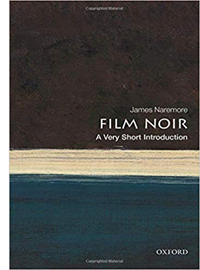 I wish I could’ve signaled his study of “the modernist crime novel” in my book. I emphasize how modernist narrative techniques shaped middlebrow fiction, which in turn made their way into movies. Naremore points out some more direct affiliations:
I wish I could’ve signaled his study of “the modernist crime novel” in my book. I emphasize how modernist narrative techniques shaped middlebrow fiction, which in turn made their way into movies. Naremore points out some more direct affiliations:
In the previous two decades modernism had influenced melodramatic fiction of all kinds, and writers and artists with serious aspirations now worked at least part time for the movies.
When the trend reached a peak in the early 1940s, it made traditional formulas, especially the crime film, seem more “artful.”. . . And yet there was a tension or contradiction within the Hollywood film noirs of the 1940s. Certain attributes of modernism—its links to high culture, its formal and moral complexity, its frankness about sex, its criticism of American modernity—were a potential threat to the entertainment industry and were never fully absorbed into the mainstream.
Naremore goes on to discuss several influential writers—Hammett, Greene, Cain, Chandler, Woolrich—and key films such as The Maltese Falcon and Double Indemnity as examples of “tough modernism” in fiction and film. One of the virtues of the book is its sweep: it covers nearly eighty years of noir on the page and on the screen. Like everything else Jim writes, it’s essential for film fans and researchers. His recently inaugurated webpage displays his range of interests.
The Big Nutshell
Did the 1940s give us the habit of calling a movie The Big Whatever? True, we had The Big Parade in 1925 and The Big Broadcast of 1935 but it seems that the next decade was quite big on bigness. Apart from The Big Sleep (1946), we had The Big Store (1941), The Big Street (1942), The Big Shot (1942), The Big Clock (1948), The Big Steal (1949), and The Big Cat (1949). Many episodes of Dragnet, as both radio show and later TV program, had The Big . . . as their title prefix.
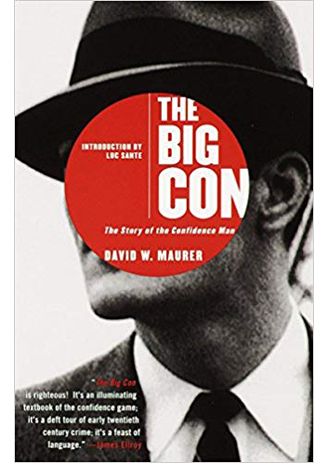 So I wish I’d known about David W. Maurer’s 1940 book The Big Con: The Story of the Confidence Man. It’s hard-boiled reportage in the vein of Courtney Riley Cooper’s flinty Here’s to Crime (1941). Maurer introduces us to a repertoire of grifts that will nimbly extract dough from the mark (aka the fink).
So I wish I’d known about David W. Maurer’s 1940 book The Big Con: The Story of the Confidence Man. It’s hard-boiled reportage in the vein of Courtney Riley Cooper’s flinty Here’s to Crime (1941). Maurer introduces us to a repertoire of grifts that will nimbly extract dough from the mark (aka the fink).
There are small-scale operations (the short con), as well as complex ensemble efforts using, naturally, the Big Store (fitted out with a fake racetrack wire). The scam shown in The Sting (1973) is a Big Store con. Maurer provides a sociological study as well: “Confidence men, like civilians, mate once or more (usually more) in their lives.” I don’t know exactly how I would have worked in a footnote to The Big Con, but I would have tried.
While Maurer was writing The Big Con, something more sinister was going on. In her four-story farmhouse, Frances Glessner Lee was laboring over the Nutshell Studies of Unexplained Death.
These were crime scenes presented on an itty-bitty scale. Little corpses—stabbed, drowned, hanging—are surrounded by the most banal furnishings. Exquisitely miniaturized chairs, rugs, lamps, beer bottles, calendars (“Corn Products Sales Company”) surround the pathetic figures. A woman stares up from a bathtub alongside tiny towels, hanging socks, and even a simulacrum of tap water endlessly gushing. Frank Harris is found drunk and crumpled in front of a saloon; the next scene shows him dead in his cell. What happened?
Ms Lee, a wealthy devotee of criminal investigation, recreated these grim tableaus as audio-visual aids for police training. Exactly how useful they were as pedagogy isn’t clear. The imagery recalls classic mysteries, and it’s not surprising that Lee was a friend of Erle Stanley Gardner, creator of Perry Mason. Yet her scenes have a creepy melancholy quite alien to Golden Age puzzle plots. As a testimony to the 1940s fascination with aestheticized homicide, they’re close to Weegee or Chester Gould. But they’re rendered as fastidiously as a Joseph Cornell box. I see in the Nutshells the populist Surrealism that led, at the other end of the scale, to Wisconsin’s House on the Rock (which began construction in the 1940s).
Corinne May Botz is the David Fincher of the Lee oeuvre. Her camera in The Nutshell Studies of Unexplained Death gets deep into the scene and renders the most upsetting images with a cold precision that matches the staging. These bits of cloth and plastic, sculpted and arranged with maniacal precision, make death at once childish and bleak. Blown up in Botz’s photos, the scenes radiate anxiety and menace. Dollhouse noir?
Frozen movies
Will Eisner, “Beagle’s Second Chance,” Spirit Comics (3 November 1946).
In Reinventing Hollywood I suggest that techniques we find in the films have their counterparts in popular novels, short stories, plays, and radio shows. Artists in these media were also exploring shifting time frames and viewpoints, voice-over narration, and other devices. I called it the multimedia swap meet, where mass-culture wares were available for use and revision (thanks to the variorum).
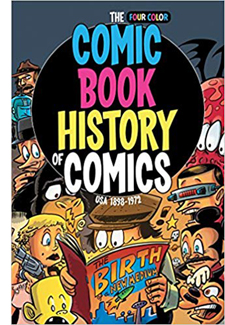 A Christmas gift from alert programmer Jim Healy reminded me of my neglect of a major medium. Jim gave me the wondrous Comic Book History of Comics by Fred Van Lente and Ryan Dunlavey. Each teeming page is jammed with facts, figures, and follies from the history of American comic art, illustrated with frantic drawings and exploding panels. As a comics fan, I should have mentioned how the narrative strategies I traced in film have counterparts in many of the trends Van Lente and Dunlavey cover.
A Christmas gift from alert programmer Jim Healy reminded me of my neglect of a major medium. Jim gave me the wondrous Comic Book History of Comics by Fred Van Lente and Ryan Dunlavey. Each teeming page is jammed with facts, figures, and follies from the history of American comic art, illustrated with frantic drawings and exploding panels. As a comics fan, I should have mentioned how the narrative strategies I traced in film have counterparts in many of the trends Van Lente and Dunlavey cover.
One example is shown at the top of today’s entry: an effort toward optical POV in Will Eisner’s The Spirit. Eisner renders almost all the panels on that page as subjective. At the time, films were exploring the same idea for certain scenes (e.g., Hitchcock’s work), for long stretches (Dark Passage, 1947), and for nearly the whole movie (The Lady in the Lake, 1947).
Of course Eisner’s Spirit tales evoke noir visuals as well–and become more noirish as the Forties go along, at least to my eye. Other cartoonists, particularly Chester Gould and Milton Caniff, push toward the steep compositions and chiaroscuro lighting we find in the films. I’m inclined to say that the movies got there first; I argued in The Classical Hollywood Cinema that noirish visual designs were often recruited for scenes of crime and mystery in the 1920s and 1930s. (A blog entry found examples from the 1910s.) I suspect that artists of the comics adopted those schemas when they started to make cops-and-robbers strips. By the 1940s, though, with Eisner and others, the visual dynamism pushed beyond what we see in most films. Except, as always, for Welles: Mr. Arkadin seems an Eisner comic brought to life.
Vanilla noir
The Man Who Cheated Himself (1950).
Noir is a tricky category because it’s a cluster concept. It can refer to visual style, matters of narrative or narration (haunted protagonists, plays with viewpoint), genre (drama, not comedy), and themes (betrayed friendships, dangerous eroticism, male anxiety). Take away one dimension and you might still be inclined to call the movie a noir. Beyond a Reasonable Doubt (1956) has a noir plotline, but its disarmingly drab images mostly lack the low-key look. And maybe someone would call Murder, He Says (1945) a noir comedy.
A good example of mild noirishness is The Man Who Cheated Himself (1950), now made available in a handsome UCLA restoration from Flicker Alley. Ed Cullen is a tough homicide cop lured by a rich woman into a murder plot. He helps her cover it up, but his younger brother, just starting out in the police force, gets too close to solving the case.
The action climaxes in a vigorous showdown in San Francisco’s Fort Point compound. Director Felix Feist, who gave us the better-known The Devil Thumbs a Ride (1947) and The Threat (1949), exploits this impressive location.
Most of the film is more soberly shot, but one long take of an interrogation uses the typical Forties image: a low-slung camera, figures deployed in depth and rearranged as the pressure intensifies.
The Blu-ray release includes a well-filled booklet and two excellent documentaries. Brian Hollis pinpoints the use of San Francisco locations and has interesting comparisons with Vertigo. A second short provides background on the participants and the film’s production, with shrewd remarks on the film’s casting by Eddie Muller. I was also pleased to see that the film, full of smokers, includes Hollywood’s favorite brand of the Forties, Chesterfields.
From Sunrise to Moonrise
Moonrise offers a different negotiation of noir conventions. The Criterion Blu-ray release, produced by Jason Altman, makes this 1948 classic available in a much better version than I’ve seen before. I discuss the opening in Reinventing, taking it as an example of a deeply subjective montage sequence, and I posted the clip online as a supplement.
After knowing the film for years, I expected that the 1946 source novel by Theodore Strauss would have some of the delirious prose we get in Steve Fisher’s I Wake Up Screaming (1941). Strauss wrote film journalism for the New York Times, so it seemed likely he would incorporate some of the pseudo-cinematic techniques of voice-over, subjectivity, and the like, as do other crime novels I mention in Reinventing. Instead, the storytelling is standard hardboiled. Here, for instance, is Strauss sketching the buildup of grudges that leads Danny to kill his long-time nemesis Jerry:
Every time his fist smacked into Jerry’s soft side or smashed Jerry’s mouth against his teeth Danny knew he was paying back. He was paying back for that first day at grade school when he was the new kid and Jerry had whipped him with the whole playground backing him. He was paying back for the night Jerry and his gang took him into the alley and tarred him because Jerry said he’d squealed to the principal. He was paying back for the scar on his shoulder left by Jerry’s cleats in scrimmage seven years ago. He was paying back for every dirty crack jerry had ever made about him or his father in public or private, to his face and behind his back. Paying back. Paying pack good.
Borzage’s movie turns this compact backstory into something much more hallucinatory.
The montage intersperses a hanged man with vignettes of his son being bullied from childhood on. First the rippling miasma seen under the credits gives way to blobs appearing as if in reflection. The camera reveals them as mysteriously projected on a wall (or is it a screen?), and then it picks up feet stalking toward the gallows.
Witnesses are revealed standing in the rain, and the camera rises to show the execution as shadows flung onto the wall/screen.
It seems more of a feverish childhood vision of the hanging rather than any veridical presentation. Cut to a view of a baby with a doll dangling over his crib. This traumatic image is followed by scenes of jeering schoolboy cruelty. (“Danny Hawkins’ dad was hanged!”)
It’s a murky, delirious passage. Its tactility, with mud smeared into Danny’s face, admirably prepares us for a film steeped in swamp water and dank foliage. Here, as elsewhere, 1940s filmmakers are rehabilitating the expressionist devices of late silent film.
The rest of the film doesn’t present such overpowering imagery, but by continuing the opening sequence in the present, following Danny as he drifts past a dance pavilion, the narration makes Danny’s fight with the bully Jerry a furious culmination of all the indignities he’s suffered.
The plot traces a familiar Forties trajectory, following a flawed but not despicable man driven to conceal a crime. In the course of his evasions, he tries to make a life with a compassionate woman. There are many wonderful scenes, including a suspenseful ride on a ferris wheel and a lyrical dance in an abandoned mansion. The lawman tracking Danny comes off as gentle and compassionate. The rippling imagery of the opening recurs in the background of shots, as if the swamp were waiting to claim Danny. As Hervé Dumont points out in a bonus conversation with Peter Cowie on the Criterion disc, all this gloom eventually clears to arrive at a sun-drenched resolution quite different from your typical noir payoff. (Though it’s faithful to the novel, as indeed most of the film’s plot is.)
This time around I was struck by the delicacy of Frank Borzage’s direction in the less flamboyant passages. This master of silent cinema knows how to let a pair of hands show distress, an effort toward tenderness, and then rejection.
Borzage was most famous for his feelingful melodramas Humoresque (1920), Seventh Heaven (1927), and Street Angel (1928). He made those last two features at Fox while F. W. Murnau was there, and it’s probably not too much to see the brackish mist of Borzage’s 1948 film as reviving the look of the nocturnal countryside scenes of Sunrise (1927).
Some shots might almost be homages to Murnau’s film.
The compositions remind us that the 1940s deep-focus style isn’t far from the wide-angle imagery Murnau pioneered in the silent era. Although Strauss’s novel gives the Borzage film its title, we’re free to imagine Sunrise (in which the moon figures prominently) as a prefiguration of Moonrise, in which we never see the moon rise.
A final thanks to all who have picked up a copy of Reinventing Hollywood. Apart from its arguments, I hope that it steers you toward some new viewing pleasures.
Film rights to The Silent Patient, whose author has an MFA in screenwriting, have been sold to Annapurna and Plan B. Amy Adams is set to star in The Woman in the Window, from Fox 2000.
It seems that The Woman in the Window owes a debt to more than movies. A detailed profile of its author in The New Yorker suggests that exposure to Highsmith’s Ripley novels at an impressionable age can have serious consequences, especially if you wind up among the Manhattan literati.
Robert C. Harvey offers a careful analysis of Eisner’s Spirit story, “Beagle’s Second Chance,” in The Art of the Comic Book: An Aesthetic History (University Press of Mississippi, 1996), 178-191. Interestingly, the chapter is titled, “Only in the Comics: Why Cartooning Is Not the Same as Filmmaking.”
The most comprehensive book on Borzage’s career I know is Hervé Dumont’s de luxe edition Frank Borzage: Sarastro à Hollywood (Cinémathèque Française, 1993). An English translation was published in 2009.
The following errors are in the hardcover version of Reinventing Hollywood but are corrected in the paperback.
p. 9: 12 lines from bottom: “had became” should be “had become”. Urk.
p. 93: Last sentence of second full paragraph: “The Killers (1956)” should be “The Killing (1956)”. Eep. I try to do the film, and its genre, justice in another entry.
p. 169: last two lines of second full paragraph: Weekend at the Waldorf should be Week-End at the Waldorf.
p. 334: first sentence of third full paragraph: “over two hours” should be “about one hundred minutes.” Omigosh.
We couldn’t correct this slip, though: p. 524: two endnotes, nos. 30 and 33 citing “New Trend in the Horror Pix,” should cite it as “New Trend in Horror Pix.”
Whenever I find slips like these, I take comfort in this remark by Stephen Sondheim:
Having spent decades of proofing both music and lyrics, I now surrender to the inevitability that no matter how many times you reread what you’ve written, you fail to spot all the typos and oversights.
Sondheim adds, a little snidely, “As do your editors,” but that’s a bridge too far for me. So I thank the blameless Rodney Powell, Melinda Kennedy, Kelly Finefrock-Creed, Maggie Hivnor-Labarbera, and Garrett P. Kiely at the University of Chicago Press for all their help in shepherding Reinventing Hollywood into print.
The Nutshell Studies of Unexplained Death: Parsonage Parlor, by Lorie Shaull.
From transistors to transmedia: Talking Heads tell TRUE STORIES
True Stories.
Jeff Smith is no stranger to this blogsite. He has written several entries, some based upon his Criterion Collection commentaries for FilmStruck, others on topics related to film sound and scoring. Here he brings his massive expertise to bear on the music of True Stories, newly available in a 4K transfer from Criterion.–DB
Jeff here:
As promised, this is a follow-up blog to David’s discussion of True Stories and its collage of tabloid culture, kitsch, Performance Art, Robert Wilson, Andy Warhol, Jeff Koons, and Our Town. At least some of these connections also characterize the New York music scene in the 1970s from which Talking Heads emerged. Buoyed by the energy of punk and New Wave, Byrne had long straddled the boundaries between mass culture and the avant garde.
As before, Andy Warhol serves as something of a role model. Besides designing album covers for mainstream pop performers, such as the Rolling Stones, Billy Squier, and Diana Ross, Warhol also served as the nominal producer of The Velvet Underground & Nico. The artist himself is also the subject of David Bowie’s “Andy Warhol” from Hunky Dory and Lou Reed’s “Andy’s Chest,” an outtake that eventually surfaced on VU, the 1985 compilation of Velvet Underground miscellany.
Working in the opposite direction, Byrne and company’s connections to the Manhattan cultural scene gave their work a kind of artistic credibility. Yet their avant garde impulses were always counterbalanced by a veneration of the soul, funk, and blues music that shaped rock and roll’s art and history. In what follows, I trace the long and winding road Talking Heads took in their journey to True Stories, both as film and as album.
Making the scene
The Ramones at CBGB in the 1970s.
David Byrne’s band, Talking Heads, is almost certainly the most successful group to emerge from the downtown New York music scene of the late 1970s. Of the eight albums the band released between 1977 and 1988, seven of them were certified either gold or platinum. Little Creatures, the album released just before True Stories, went double platinum, selling more than two million units. So did Stop Making Sense, the soundtrack to their concert film directed by Jonathan Demme.
At the start of their recording career, much of the energy surrounding the New York music scene centered on the venerable East Village club, CBGB. Its name was short for “Country, Bluegrass, and Blues.” Yet the bands who came to be identified with the venue were about as far away from roots music as you could get. Initially, CBGB was associated with the emerging American punk rock scene. The Ramones were frequent performers as were the Plasmatics, Richard Hell and Voidoids, and Johnny Thunders’ band, the Heartbreakers.
Yet the range of musical styles represented at CBGB ventured quite far afield from the sped-up, chainsaw guitar sounds of punk. Patti Smith channeled her inner Rimbaud over Lenny Kaye’s Nuggets-inspired guitar lines. Television featured the evocative string-bending of Tom Verlaine. who stretched out in long solos using modal scales that fused Ravi Shankar with John Coltrane. James Chance and the Contortions showcased the wild saxophone playing of their frontman, specializing in a peculiar form of avant-funk jazz. Blondie began by refashioning sixties garage rock into their own brand of punk. But their style became more eclectic, branching out to include disco, calypso, and rap. They attained a huge crossover success in the process, thanks to lead singer Debbie Harry’s sex appeal and sultry alto.
Talking Heads sounded like none of these. “New Feeling,” the second track on their debut album, established the template for the band’s music: skittering guitar lines, tightly wound rhythms, and David Byrne’s strangled yelp. Its spare, spiky pop sound featured the rhythmic interplay of Byrne’s and Jerry Harrison’s guitar lines and the precise sixteenth note fills of drummer Chris Frantz.
Talking Heads 77 occasionally added elements that slightly broadened their musical palette. Think of the steel drum sounds that color “Uh-Oh, Love Comes to Town” or the loping electric piano chords of “Don’t Worry About the Government.” Indeed, the latter wouldn’t sound out of place in a Sesame Street bumper.
Yet, the album’s flagship single was “Psycho Killer” for a reason. Its nervy energy epitomized the group’s sound in its early days at CBGB. This was rock and roll to be sure. But it seemed like the kind of thing the subject of Edward Munch’s The Scream would dance to if he ever got off that bridge.
Talking Heads’ follow-up, More Songs About Buildings and Food, initiated a period of fruitful collaboration with producer Brian Eno. Using synthesizers and other keyboard instruments to flesh out the band’s sound, Eno nudged the Heads toward more danceable tunes. Built on Tina Weymouth’s pliant, bouncy bass lines, songs like “Found a Job” and “Stay Hungry” saw the band incorporating elements of seventies funk, soul, and disco. The band’s cover of Al Green’s “Take Me to the River” also gave the group their first chart hit.
That single’s slow climb peaked the same week of Talking Heads’ television debut on Saturday Night Live. For many viewers, this was their first encounter with Byrne’s “Norman Bates meets Pete Townshend” persona. And, even though Byrne’s hipster nerd desperation seemed the absolute antithesis of Green’s “lover man” come-on, his apparent interest in exploring black musical idioms felt almost painfully sincere.
Bringing Noho to the bush of ghosts
Music video for Once in a Lifetime.
Over the next three albums, the Heads’ collaboration with Brian Eno pushed them even deeper into world musical cultures. The band simplified their song structures, but increased the complexity of their arrangements and instrumentation. “I Zimbra” added Cuban, Brazilian, and African percussion along with the signature stylings of Robert Fripp’s guitar work. Remain in Light‘s densely layered synthesizers, various types of drums, and percussion atop the guitars, bass, and trap set that had been the core of the group’s sound since their first album. Created through countless overdubs that enabled each band member to play percussion alongside their normal instruments, the album featured extended Afrofunk and worldbeat grooves that interwove “call and response” vocal lines with intricate polyrhythms.
To recreate this sound on stage, the band recruited several players from other groups. On tour Talking Heads became a sort of New Wave supergroup with King Crimson’s Adrian Belew on guitar, Ashford and Simpson’s Steve Scales on percussion, and Funkadelic’s Bernie Worrell on keyboards. The expansion of Byrne’s musical vision was nothing short of stunning. Using improvised jams and communal music-making as a point of departure, Remain in Light went well beyond the faux gospel and art school irony of “Take Me to the River.” By mixing preachers’ rants with the wordplay of Bronx rappers, Byrne discovered his inner Fela Kuti.
Talking Heads start making cents (on sync licenses)
1983 would prove to be a watershed year for Talking Heads. The band released Speaking in Tongues, which spawned their first top ten hit, “Burning Down the House.” The record also represented a kind of apotheosis. It was less musically adventurous than Remain in Light. But it seamlessly blended the band’s early New Wave sound with its later Afrofunk influences. Instead of grooving on one chord, most songs on Speaking in Tongues contained more conventional harmonic changes. And instead of building songs out of shorter “loops,” the new record featured much more traditional song structures with clear demarcations of verses, choruses, and bridges.
The album also served as the centerpiece of Jonathan Demme’s concert film, Stop Making Sense, which was filmed over four separate dates in December of 1983 at the Pantages Theater in Los Angeles. The set list more or less traced the history of Talking Heads, beginning with David Byrne performing “Psycho Killer” on an acoustic guitar accompanied by a rhythm track played back by a boombox. It closed with a performance of “Crosseyed and Painless” that featured the full tour ensemble, including Scales, Worrell, guitarist Alex Weir, and two female backup singers. In between, Byrne bounced around the stage in his big white suit, turning the concert stage into a space for performance art. As before, Byrne seemed to self-consciously reject the usual rock star poses. Instead, he shook, squirmed, and jerked like a giant white Gumby on a hot tin roof. Stop Making Sense went on to become a modest commercial success and won the National Society Film Critics award for Best Documentary of 1984.
Between 1983 and 1986, Talking Heads also saw their profile raised by the use of songs in other popular films. The group had already been featured in a motley group of titles prior to Speaking in Tongues. “Life During Wartime” was included in Alan Moyle’s Times Square (1980), a teen comedy about two aspiring punk singers in New York. But so was almost every other hot artist of the moment, such as Joe Jackson, Gary Numan, the Cars, the Cure, and the Pretenders. The Heads had also performed “Psycho Killer” in Bette Gordon’s short film, Empty Suitcases.
The industry surge in soundtrack sales in the early to mid-eighties, though, gave Talking Heads access to more high-profile studio projects. “Burning Down the House” made an appearance in the rowdy fratboy comedy, Revenge of the Nerds. And the use of “Once in a Lifetime” over the opening credits of Paul Mazursky’s Down and Out in Beverly Hills (1986) fueled the song’s return to Billboard’s Hot 100 more than five years after it was released.
A much more interesting case of music licensing occurred with the push given to “Swamp,” the opening track on side two of Speaking in Tongues. Robbie Robertson of The Band selected the song for inclusion on the soundtrack of King of Comedy (1982) well before the album was released. It then appeared again just months later in the Tom Cruise teen comedy, Risky Business. The reuse of “Swamp” so soon after Scorsese’s film might well be a case of serendipity. Paul Brickman, Risky Business’ screenwriter and director, likely glommed onto it when he heard David Byrne intone the phrase “risky business” in the song’s last verse.
“Swamp,” though, anticipated yet another change of direction in the band’s music. Unlike the worldbeat influences that were still evident in the rest of Speaking in Tongues, the track returned Talking Heads to American terra firma, more specifically the musical idioms of the Mississippi delta. A slow, blues shuffle tune with strong triplet rhythms, “Swamp” was truly unlike anything else the group had done before. Floating on Bernie Worrell’s funky synth textures, it sounded like a Parliament cover of an old Muddy Waters song. The fact that Byrne’s vocals deliberately mimicked John Lee Hooker just added to its overall strangeness.
But just as “I Zimbra” presaged Talking Heads’ foray into Afrofunk, “Swamp” foreshadowed the band’s turn toward American roots music. Their follow-up album, Little Creatures, showed the band branching out even further with the rollicking zydeco of “Road to Nowhere” and the soporific country weeper, “Creatures of Love.” All of this would eventually lead Byrne and co. to True Stories and to a state with a musical canvas almost as large as its geography: Texas.
More songs about voodoo and dreams
In the special features on Criterion’s excellent edition of True Stories, David Byrne acknowledges that his conception of the film was partly inspired by his admiration for Robert Altman’s Nashville. The resemblances between the two films aren’t hard to discern. Both films feature multiple protagonists and use setting to unify the film’s different plotlines. Both films include the perspectives of one or more outsiders — The Narrator in True Stories, Opal and John Triplette in Nashville — who serve as the viewer’s guide to the community each explores. Both films also involve preparations for a local celebration – the talent show, the political rally – to motivate musical numbers by a variety of performers, much in the manner of a revue or jukebox musical.
Texas is home to a distinctive mix of different kinds of “roots” music. Byrne was keen to capture that breadth. In an essay on the music written for True Stories, Byrne says, “I realized there was a lot to represent – rock, country, Tex-Mex, polkas, Latin, lounge jazz, disco, and some made-up genres, like an accordion marching band.” Trips to scout locations for the film brought Byrne into contact with a number of clubs and musicians. He then offered some local musicians an opportunity to contribute to the score. None of the groups represented is particularly well known outside of True Stories. Indeed, neither the Panhandle Mystery Band nor Brave Combo achieved even the modest fame accorded to Texas singers like Delbert McClinton or Freddy Fender. Still these local musicians definitely added to the “specialness” that Virgil represents.
In his collaborations with local musicians and the songs written for various actors to sing in True Stories, Byrne found himself serving two masters. On the one hand, Byrne wanted to pursue his vision for the film and to write songs that express the feelings and perspectives of various characters. On the other hand, though, Byrne also had to make sure these numbers still worked as Talking Heads tracks. It seems likely that Warner’s willingness to support the film depended upon the ancillary revenues they hoped to earn from the soundtrack. The Heads had been signed by Sire Records, a subsidiary of Warner Music. Given the band’s previous sales, a new Talking Heads album served as a hedge against the film’s disappointing box office.
Virgil wants its MTV
The three songs Talking Heads recorded specifically for the film – “Wild, Wild Life,” “Love for Sale,” and “City of Dreams” — are perhaps the best illustration of Byrne’s need to create corporate “synergy” in the relationship between True Stories and its music ancillaries. All of them are foursquare rock and roll songs. No doubt they reassured Warner Bros. that they had commercially marketable singles that could generate radio airplay and hopefully drive traffic to movie theaters. “Wild, Wild Life” would become the second biggest hit in the band’s history, peaking at #25 and spending about five months on Billboard’s Hot 100 chart.
Notably, though, Byrne insisted these weren’t genuine Talking Heads records. Instead, they represented the band’s attempts to sound like other popular artists. Byrne described the role models for these tracks:
The closing song, “City of Dreams,” is my version of a Neil Young anthem. Its lyrics echo the history lesson at the beginning of the film. “Love for Sale” was our version of a Stooges song, and “Wild, Wild Life” was my attempt at writing a song like something one might hear on MTV at the time.
Byrne doesn’t give us a lot to go on here, but we can discern at least some similarities between the songs and the artists he cites. On “City of Dreams,” Byrne’s voice doesn’t have the fragility that Young’s “high lonesome” tenor conveys. But the lyrics evoke the kind of imagery found in some of Young’s most famous songs, especially those that relate the experience of Native Americans. Indeed, Byrne’s verse about the Spanish search for gold wouldn’t seem out of place in “Cortez the Killer,” the standout track on Young’s 1975 album Zuma.
With its crunchy guitar riff and drum break, “Love for Sale” at least nominally sounds like it could be a track from the Stooges’ Fun House. It certainly channels some of the proto-punk energy that made the Stooges, especially lead singer Iggy Pop, a revered cult band in the early seventies. Yet Talking Heads’ performance shows their customary clockwork precision, and the record generally lacks the kind of wild abandon that one associates with the Stooges’ best tracks. Eric Thorngren’s audio engineering of “Love for Sale” also adds a layer of studio polish that an album like Raw Power most pointedly refuses. In an odd way, the recording gives us some insight into how the Heads might have sounded had they been a punk band in their CBGB days.
Perhaps the bigger irony here is that the song functions as an interpolated music video watched by the Lazy Woman during a bout of channel surfing. It shows Byrne’s usual eye for inventiveness within the form: silhouettes, primary colors, and a surrealist arc in which each band member is molded into a chocolate figurine wrapped in foil. Yet here is where the similarity between the Heads and Stooges ends. Iggy Pop may have been known for pouring oil or honey on his body during Stooges concerts. But in 1986, the Stooges were about the last band one would expect to see on MTV.
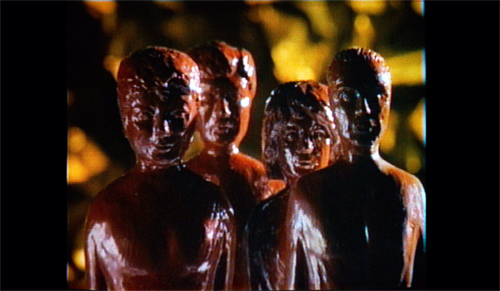
“Wild, Wild Life” is motivated in a similar way. Heard in a Virgil dance club, much of the film’s cast lip syncs to it against a bank of video monitors. Like “Love for Sale,” this footage became the basis of a very successful music video promoting the film. In a bit of an in-joke, guitarist Jerry Harrison twice appears onscreen dressed as an iconic rival artist: first as Billy Idol, then as Prince. (Note that Tina Weymouth also appears with Harrison as a fetching Apollonia.) Still, the lack of specificity in Byrne’s description suggests that it was Talking Heads’ attempt to make a rather generic pop record. In contrast to the film’s celebration of “specialness,” Byrne’s explanation of the song’s purpose functions as a backhanded critique of MTV’s role as tastemaker. In trying to sound like everyone, “Wild, Wild Life” fit quite snugly into the music network’s video rotation.
The sage in bloom is like perfume
The film’s remaining songs are performed by characters. They illustrate Byrne’s desire to capture the breadth of Texas’ musical culture in a variety of idioms. Other bits of music are also interspersed between these numbers. There are snatches of nondiegetic score based on Byrne’s two “dream” songs (“City of Dreams” and “Dream Operator”). Meredith Monk contributed a brief minimalist theme that is featured in the film’s opening and closing scenes. It is perhaps the clearest reminder of Byrne’s outsider status, enveloping the film within the sounds of the downtown Manhattan arts scene. It also includes Carl Finch’s “Buster’s Theme” as music played during True Stories’ infamous accordion parade.
At least two songs evoke the swamp pop of Eastern Texas, which shares much of its sound with the music of New Orleans. “Hey Now” features the simple tonic/dominant changes and “call and response” strophic patterns heard in second line parades during Mardi Gras. Sung by children, it sounds like a modernized version of the Dixie Cups classic, “Iko Iko.”
“Papa Legba,” on the other hand, carries a more pronounced “island vibe,” conjuring the Cuban and Jamaican styles that were such an important influence on Dave Bartholomew, Fats Domino, and Lloyd Price. Performed by the great Pops Staples, the style is apt since the song is ostensibly an appeal to a central figure in Haitian folklore. (Legba is a demigod in voodoo culture who facilitates communication between living beings and the souls of the dead.) Staples expressed concern about this scene. The actions of his character, Mr. Tucker, ran squarely against the actor’s Christian faith. Yet, despite Staples’ literal embodiment of the “magic negro” trope, Tucker’s actions here come across as rather benign. He acts on Louis’ behalf, and both characters seem so decent and honest that their resort to sorcery seems quite harmless.
In other films and television shows, such as Crossroads or American Horror Story, Legba is often trotted out as a stand-in for Satan himself. In True Stories, though, Tucker’s Legba number is a slightly less hokey version of Leiber and Stoller’s “Love Potion # 9.”
“Puzzling Evidence” is a straightforward gospel number, delivered from the pulpit by John Ingle as The Preacher. As an enumeration of possible conspiracies, the scene might seem today as QAnon avant la lettre. But sober reflection suggests the song is further evidence that Richard Hofstadter’s “paranoid style” of American politics has a long and rich history.
“Radio Head” represents the rich tradition of Hispanic styles in Texas musical culture: Tejano, conjunto, orquesta, mariachi, corrido. As performed by Tito Larriva, the tune borrows heavily from conjunto, which originated in the 1870s and fuses Spanish and Mexican vocal styles with the polkas, waltzes, and Mazurkas played by German and Czech immigrants. A central element of conjunto is the combination of 12-string guitars with button accordions. The latter has a distinctive reedy, yet sweet timbre contrasting that of the piano accordion.
“Dream Operator” and “People Like Us” round out Byrne’s portfolio by borrowing different from different strands of country music. The former is a shimmering waltz reminiscent of the Texas Troubador, Ernest Tubb, and the Western swing style of Bob Wills and his Texas Playboys. “People Like Us,” which is performed by Louis at the talent show, is an up-tempo slice of neo-honky tonk that features the requisite fiddle and steel guitars. The lyrics also voice the kinds of populist sentiment that became di rigeur in the genre by the 1980s.
At its best, in the music of Johnny Cash, Merle Haggard, George Jones, and Loretta Lynn, country music spoke eloquently of the simple pleasures of nature and family. It also explored the problems of ordinary folks, such as infidelity, divorce, and alcohol abuse. At its worst, though, such populism lapses into knee-jerk jingoism.
Byrne’s lyrics gesture toward the former of these two strains. It attests to certain Texas values: stubborn pride, an independent streak, and a resilience in hard times. Louis’ seeming humility and sincerity proves to be catnip for the Lazy Woman. She proffers the marriage proposal that Louis has sought throughout the film. In providing the resolution to the central plotline, “People Like Us” brings the narrative and Byrne’s musical journey through Texas to a fitting conclusion.
Changes in latitude, changes in attitude
For me, perhaps the most striking thing about “People Like Us” is its distance from Talking Heads’ early work. Compare it, for example, with “The Big Country,” the closing track on More Songs About Buildings and Food (below). Here Byrne’s narrator assumes a God-like view of the U.S. and its “people down there.” Imagined from maps and viewed from airplanes, the lyrics survey a cornucopia of Americana in the references to ball diamonds, whitecaps, farmlands, highways, and buildings. Yet, each chorus undercuts this encomium to the “big country” by concluding “I couldn’t live there if you paid me.”
In conversation David (Bordwell rather than Byrne) often praises “the spontaneous genius of the American people.” Is Byrne doing the same in True Stories with its portrait of small-town life as a mixture of performance art and irresistible kitsch? Or does he still occupy the previous Godlike position described in Louis’ song, laughing disdainfully at “people like us?”
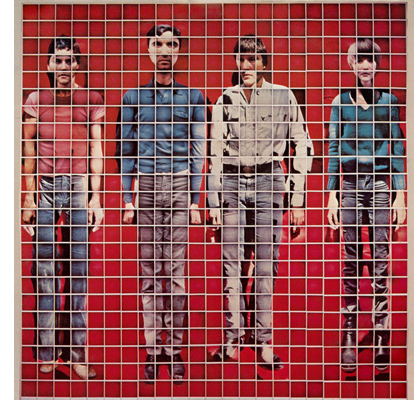 At the end of the day, I think it is impossible to truly know. If we take Byrne at his word that his songs for True Stories aren’t Talking Heads songs, then there really isn’t a contradiction. He set out to write songs in the voices of his characters and in the style of musicians quite distinct from Talking Heads. Louis is not Byrne, and therefore “The Big Country” stands on its own as a wonderful, if contemptuous take on American life.
At the end of the day, I think it is impossible to truly know. If we take Byrne at his word that his songs for True Stories aren’t Talking Heads songs, then there really isn’t a contradiction. He set out to write songs in the voices of his characters and in the style of musicians quite distinct from Talking Heads. Louis is not Byrne, and therefore “The Big Country” stands on its own as a wonderful, if contemptuous take on American life.
Yet somehow invoking the old distinction between “author” and “narrator” obscures something important about the way True Stories fits into Talking Heads’ history as a band. The songs Byrne wrote for the film seem like a culmination of the group’s turn toward American roots music in the mid-1980s. Moreover, as Byrne has shown as an impresario for his own Luaka Bop label, he has genuine admiration for an enormous variety of vernacular pop idioms. In its own way, Talking Heads’ absorption of regional American musics on Little Creatures and True Stories might be viewed as signs of artistic growth rather than the stylistic poaching of smartasses from Manhattan.
Still there is a third possibility. As my colleague Jonah Horwitz pointed out to David and me, True Stories also seems to bear a strong relation to the Lovely Music movement epitomized by Robert Ashley, “Blue” Gene Tyranny, and Peter Gordon. In Jonah’s words, this axis of modern composition is “characterized by a suspension of judgement, gaping appreciatively at the banality/beauty of America and Americans, bridging the gap between structural/minimalist ‘new music’ and popular forms like rock and country music and soap opera.”
But is this appreciative gaping is really just postmodernist snark? Adrian Martin suggests as much in his original review of the film. And faux sincerity, in and of itself, might be viewed as the deepest, most pernicious form of cynicism. Taking particular issue with the chorus of “People Like Us,” Martin writes, “According to this reading, which the film abundantly invites, its viewpoint is immaculately distant and sneering.” Citing its “patronizing, condescending tone,” Martin ultimately bemoans the fact that True Stories draws attention away from more “authentically funky little American films” that won’t get seen.
Is this ultimately where Byrne lands? Perhaps. The lyrics certainly can be viewed as a faux naif expression of Redneck stupidity.
We don’t want freedom
We don’t want justice
We just want someone to love
But if we dismiss “People Like Us” as evidence of authorial condescension, one misses the key insight that the song has to offer. Much hedonics research suggests that there is a more complex way of understanding such sentiment.
Freedom and justice may be necessary conditions of human happiness, but they are hardly sufficient. Abstract ideals ultimately don’t mean much absent the human connections that define our workaday world. Such craving for social interaction and a feeling of belonging is one reason why respondents in hedonics studies claim they would forgo a $10,000 raise for the opportunity to become a member of a small, but active club. Moreover, neuroscience also shows that romantic love produces a sense of electrochemical wonder within the brain. Not all of these changes are positive ones, but the flood of dopamine that accompanies sexual attraction helps explain why love can be both pleasurable and addictive.
Viewed from this perspective, Louis’ sentiments in “People Like Us” are far from guileless. By emphasizing toughness and resilience, the song asserts that homeostasis is possible even in the most hardscrabble life. And life is made rewarding and meaningful by the social bonds that unite us in a common humanity. Perhaps folks out there will see me espousing a version of the feigned sincerity for which True Stories is equally guilty. But given the way Byrne’s film judders my own pleasure center…. Well, let’s just say I’ll proudly wear my heart on my sleeve.
Thanks to David Byrne, Ed Lachman, Peter Becker, Kim Hendrickson, Lee Kline, Ryan Hullings, and the rest of the Criterion team for this edition. The quotation from David Byrne comes from the booklet accompanying the disc.
Thanks also to Jonah Horwitz for helpful comments on the music, and Adrian Martin for signaling his critique of True Stories.
Other work by Jeff relevant to this analysis includes The Sounds of Commerce: Marketing Popular Film Music (Columbia University Press, 1998) and his survey of the field ”The Tunes They are a-Changing’: Moments of Historical Rupture and Reconfiguration in the Production and Commerce of Music in Film,” in The Oxford Handbook of Film Music Studies, ed. David Neumeyer (Oxford University Press, 2013).
True Stories.












